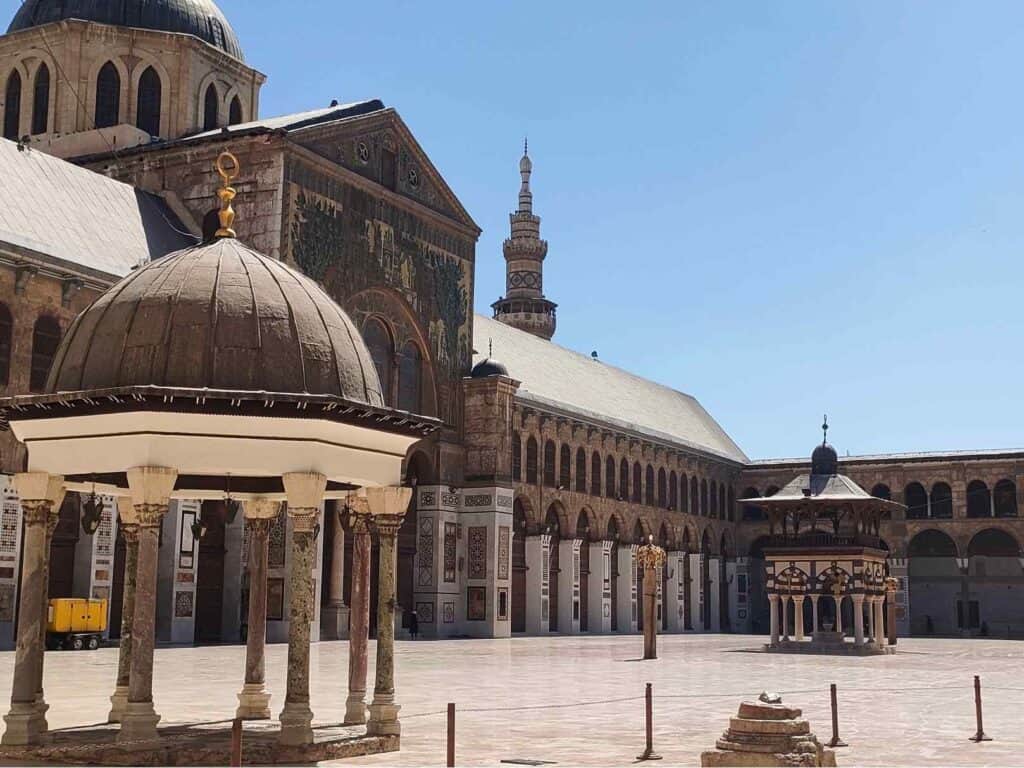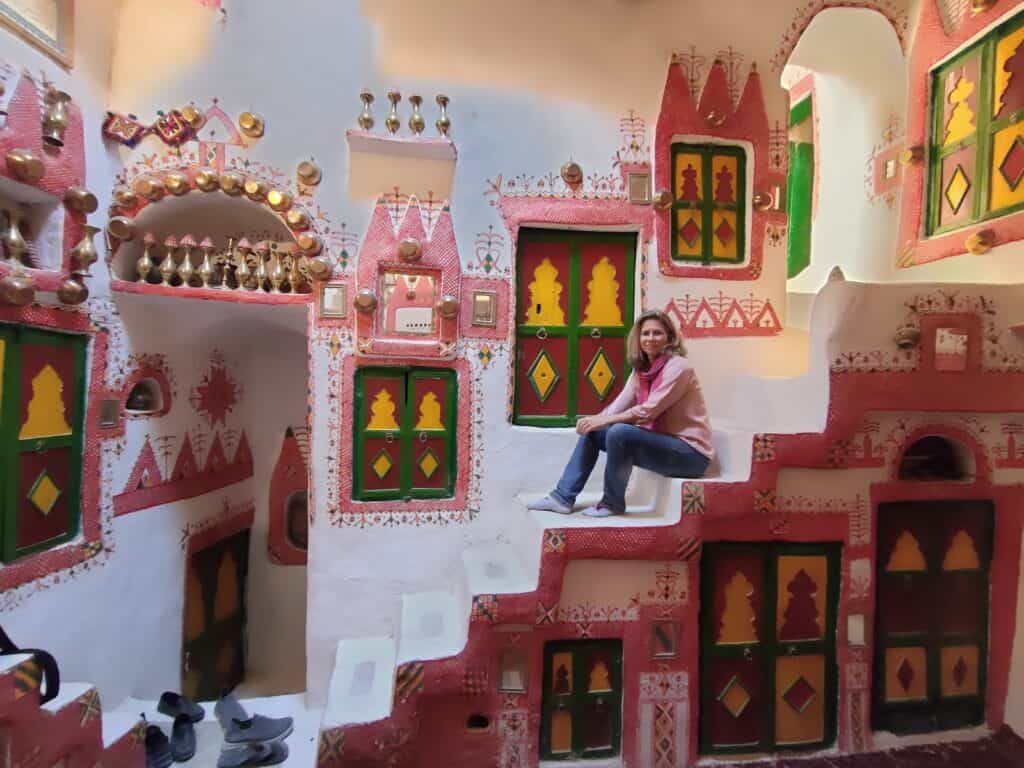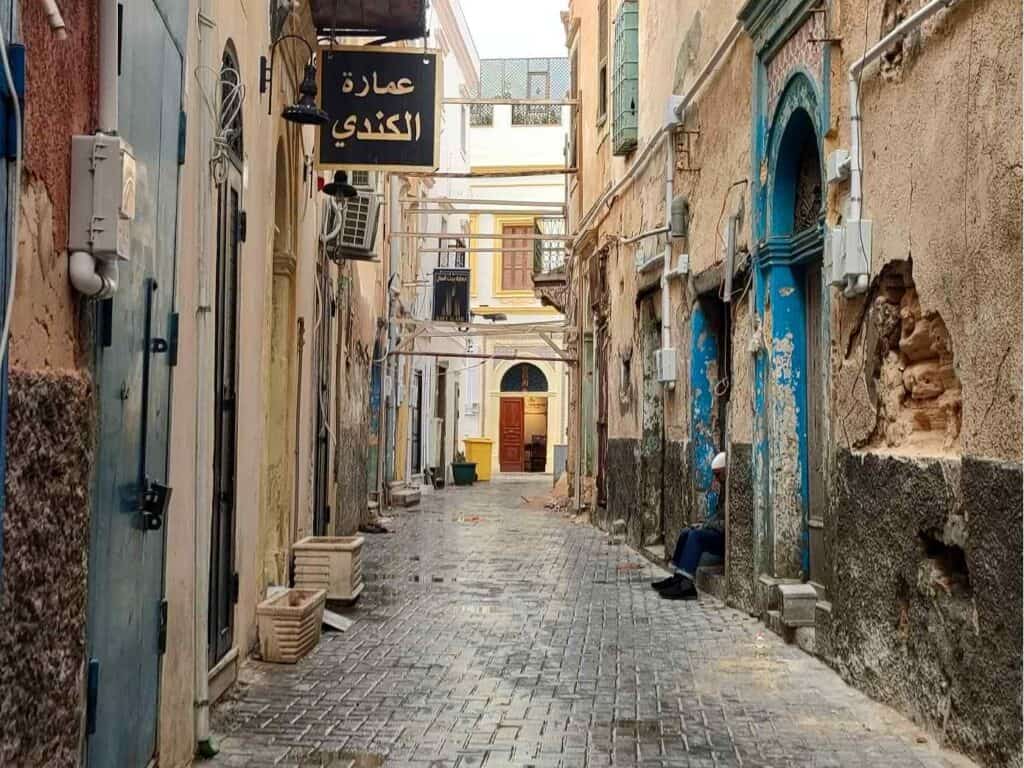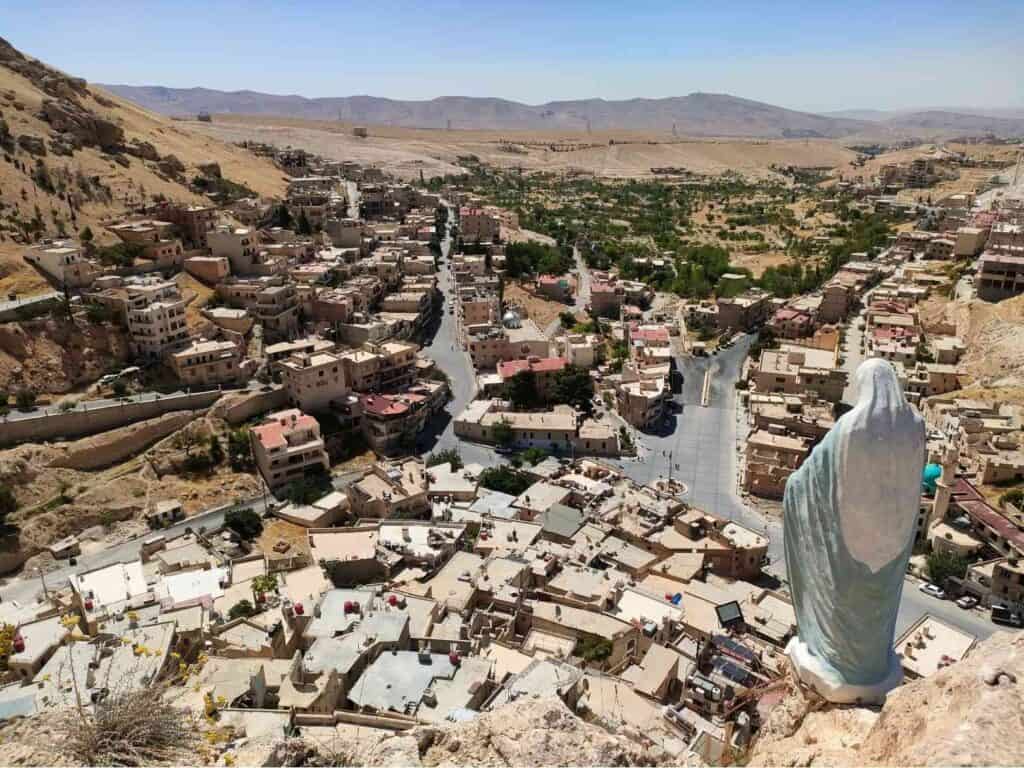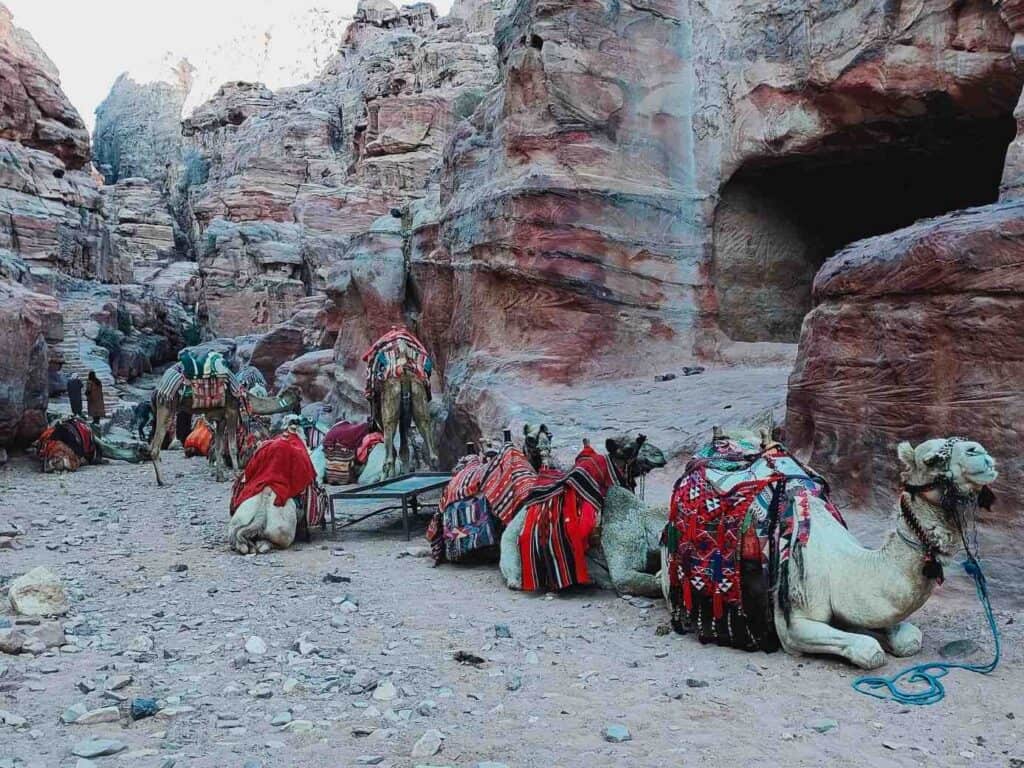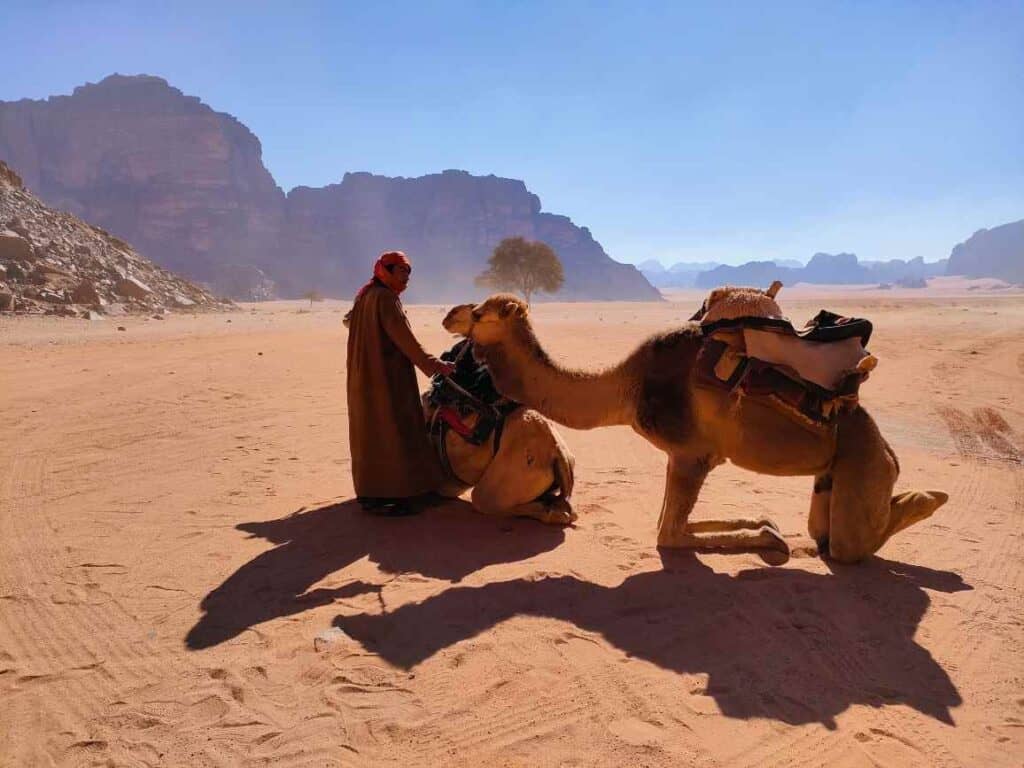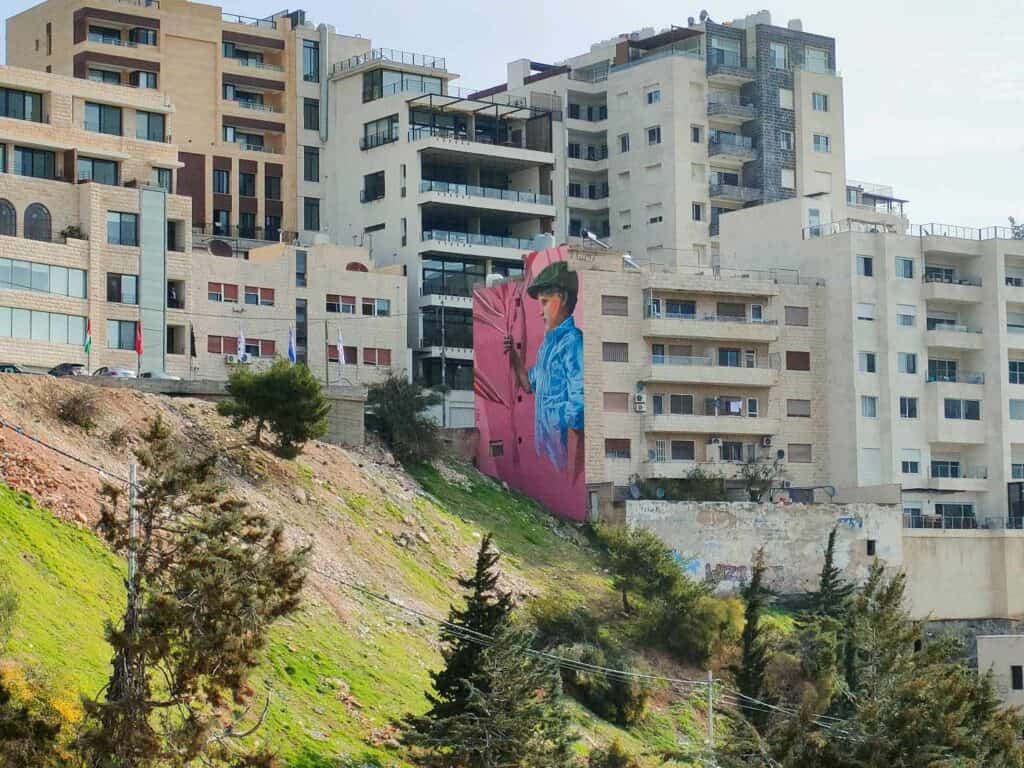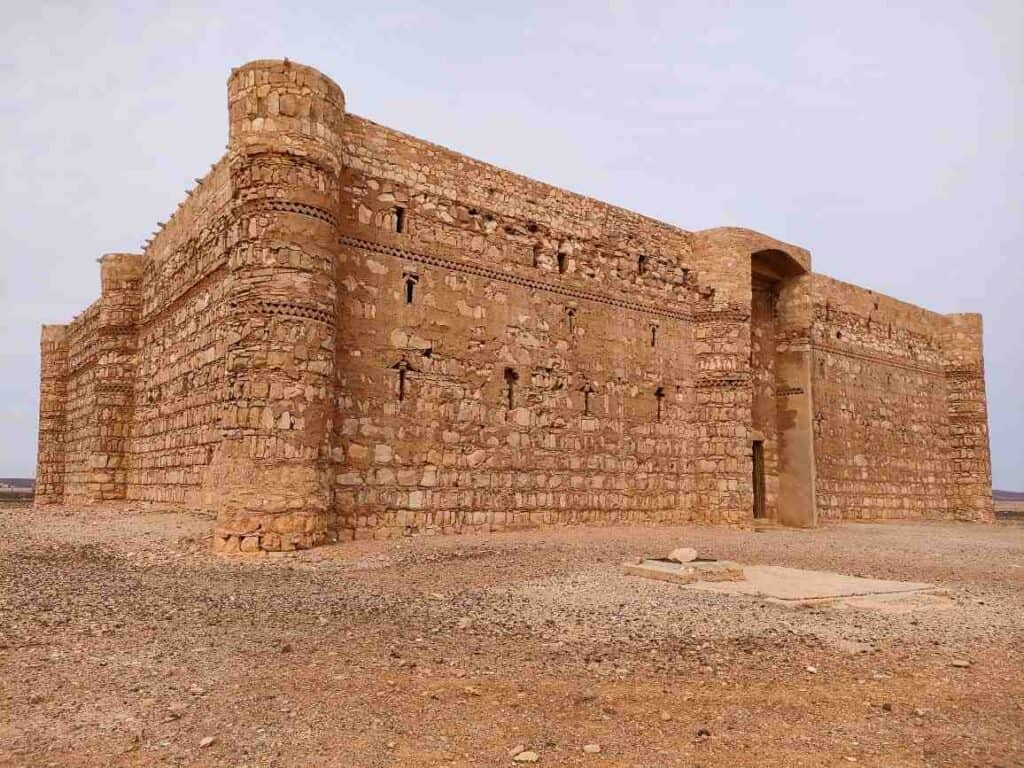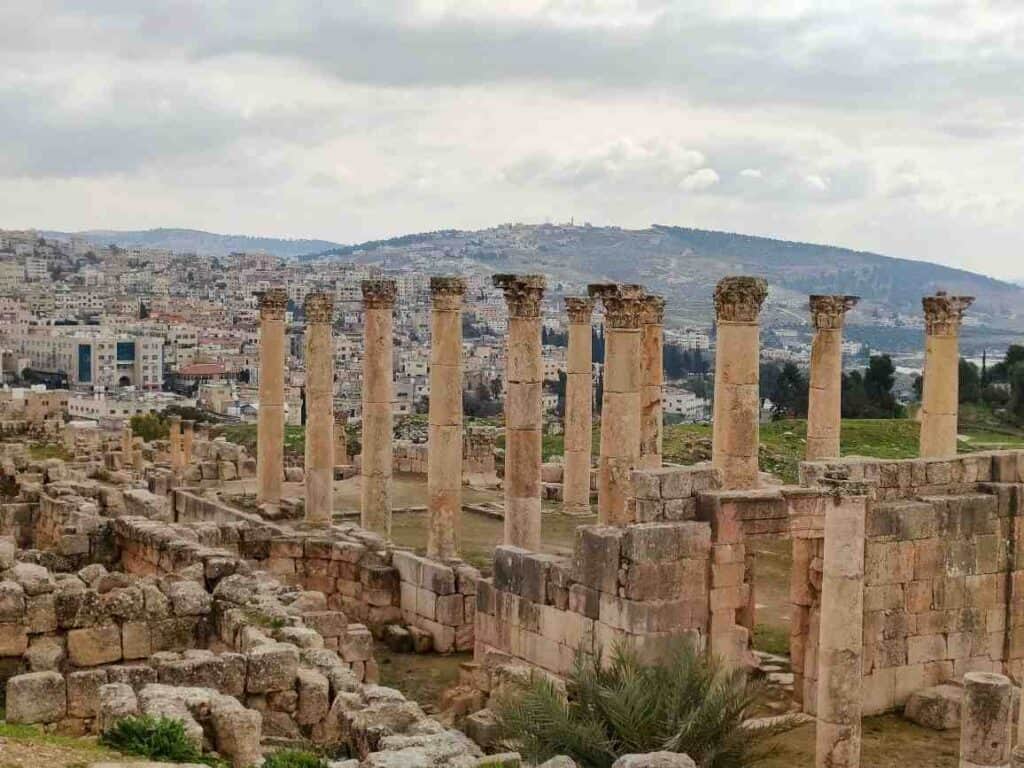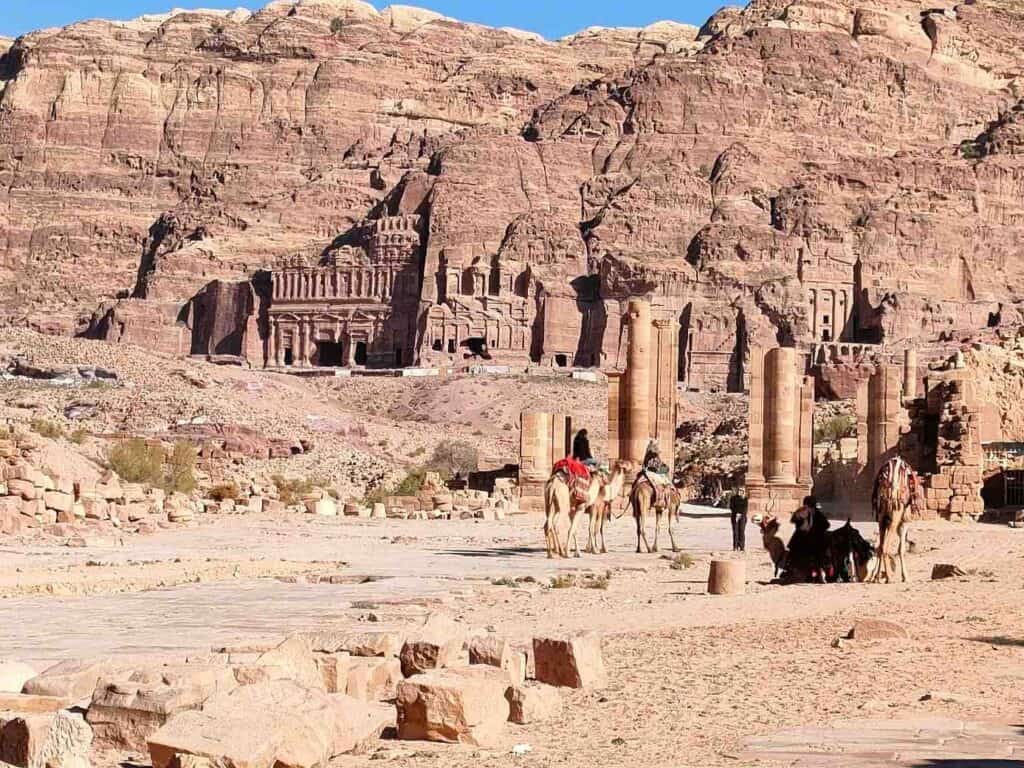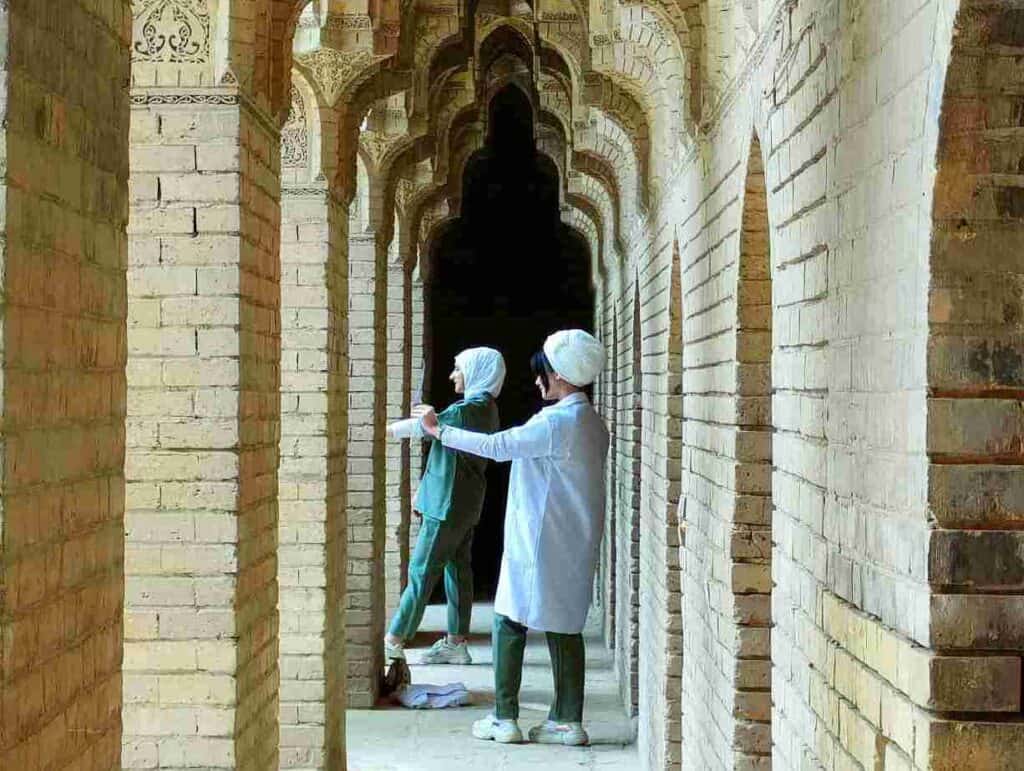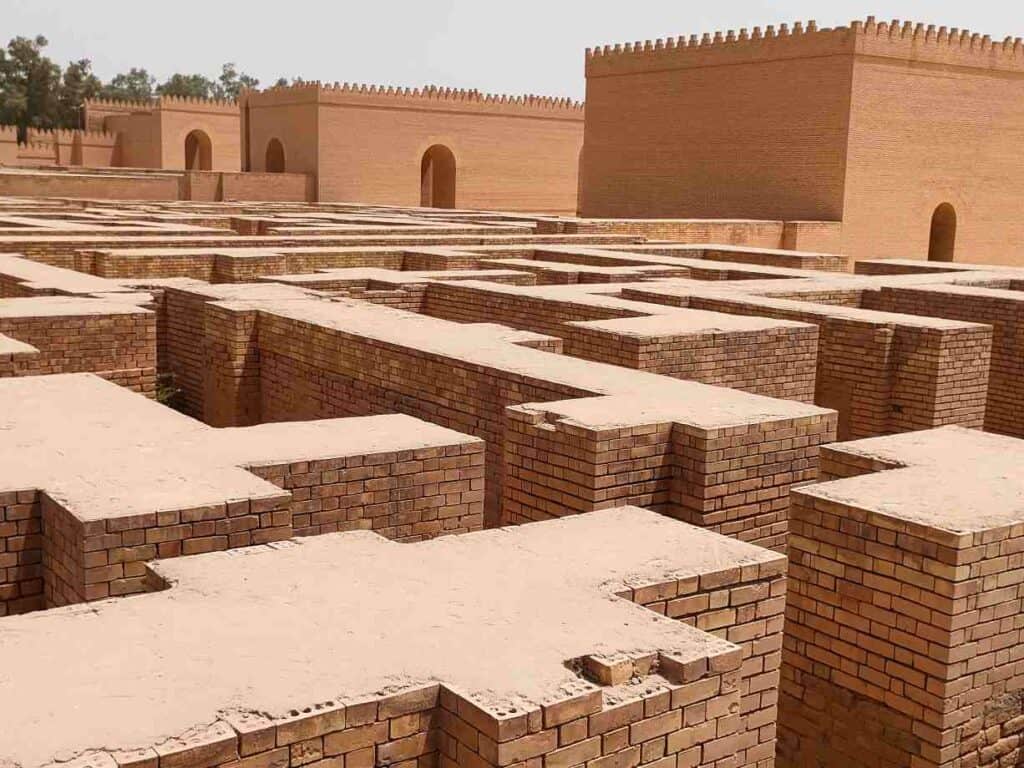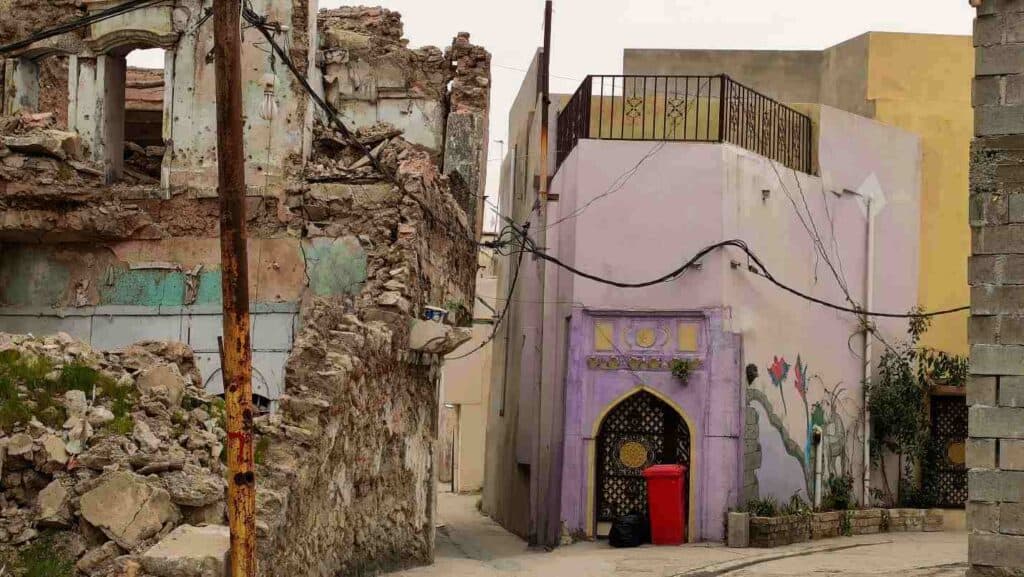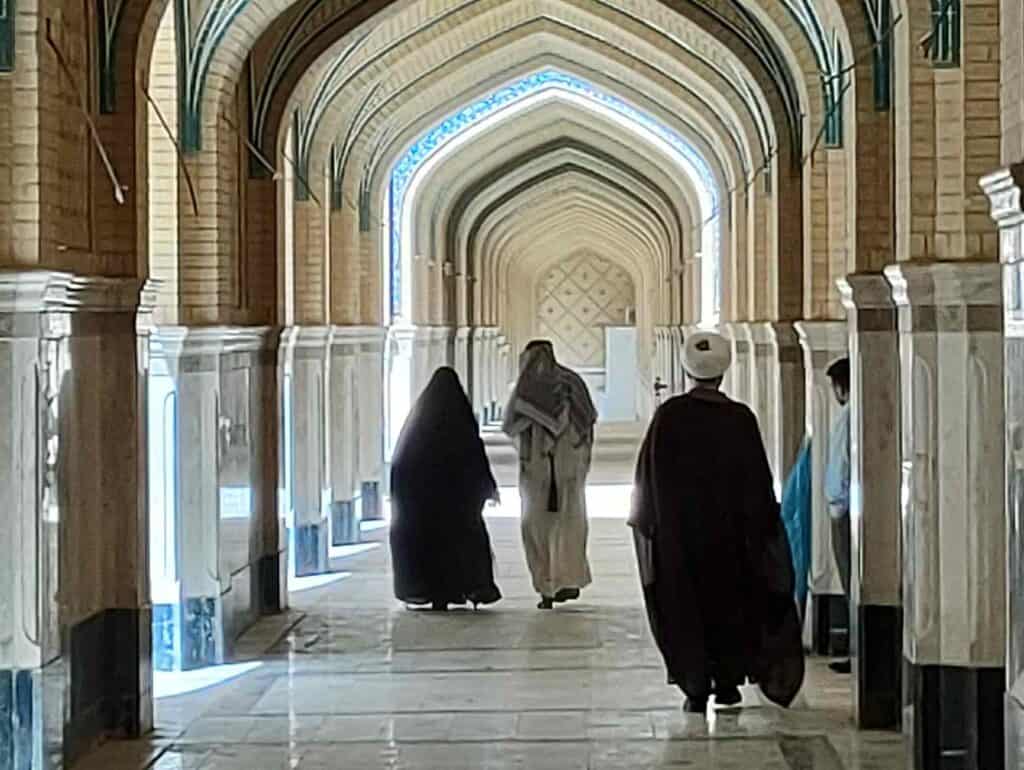This article may contain affiliate / compensated links. For full information, please see our disclaimer here.
Before 2011, Syria was a popular tourist destination in the Middle East, and tourism significantly contributed to the state revenues. It was known for its authentic Arab culture, hospitality, and astonishing historic sights dating back thousands of years. And all that did not simply disappear. With the breakout of the “Arab Spring”, starting in Tunisia and spreading to a series of other Arab countries, things suddenly changed. In Syria, events took a direction no one could expect, and its aftermath was massive destruction, human tolls, and escalation that pushed several other players, including foreign countries and countless militant groups, to pop up and interfere. It became one of the most complex wars in history. The war prolonged so much that Syria became identical to destruction, and its cultural and historical heritage got buried in the collective minds. The fights are over in most parts of the country, but its side effects put an enormous burden on the people who struggle to make ends meet. There is electricity and fuel shortage, prices are soaring compared to local standards, and the signs of war become apparent once you leave Damascus, which often puts you in an emotional mood.
Syria in 2024 is different from what it was before 2011, but there is so much more behind how you imagine it through the media’s lenses. Despite the large-scale damage, the ancient heritage is still fascinating. Syrian cuisine is one of the most delicious, but the most memorable part of the trip was seeing how welcoming the local people are despite hardships.
Here, I share all the information you need to know before traveling to Syria and help you decide whether this is something you should do.
- Is Syria safe to visit in 2024?
- Travel insurance to Syria
- Is it ethical to visit Syria as a tourist in 2024?
- Visit Syria independently or with a group
- Solo travel with e-visa
- Visit Syria with a group
- Get visa clearance
- Border-crossing from Lebanon/Jordan to Syria
- Restriction to enter Syria
- Restrictions with Syrian stamp in the passport
- Money in Syria
- What is the best time to travel to Syria?
- How to dress in Syria?
- Sim card
- Is Syria cheap? Prices in Syria
- Accommodation
- Food and alcohol in Syria
- Ethnic groups
- Geography
- Official language
- Religion
- Christians
- Short history
- What to visit in Syria in 2024
- Other useful Middle East travel guides
- More posts about the Middle East
Is Syria safe to visit in 2024?
Update: the various opposition groups quickly took control of Aleppo, Hama, Homs and then Damascus, and after 54 years, the Assad family’s rule ended on 8th December 2024. However, the transitional period is full of uncertainty, as the opposition groups are not united either. Until the situation stabilizes, it is definitely not recommended to travel to Syria!!!
This is the first thing that probably comes to mind when traveling to Syria.
Syria is officially still in a state of war, and incidents still happen, like the one in April 2024 against the Iranian embassy in Damascus. However, these are targeted against specific establishments or people and never intentionally against tourists.
Since 2018, the Syrian government has controlled most of the country (except for the northeast, the south, and Idleb), and recent political developments raise hope that the long-desired sense of stability and optimism about the future will return. Tourists can visit certain parts, and several checkpoints around the country ensure that they don’t venture to places that are deemed unsafe.
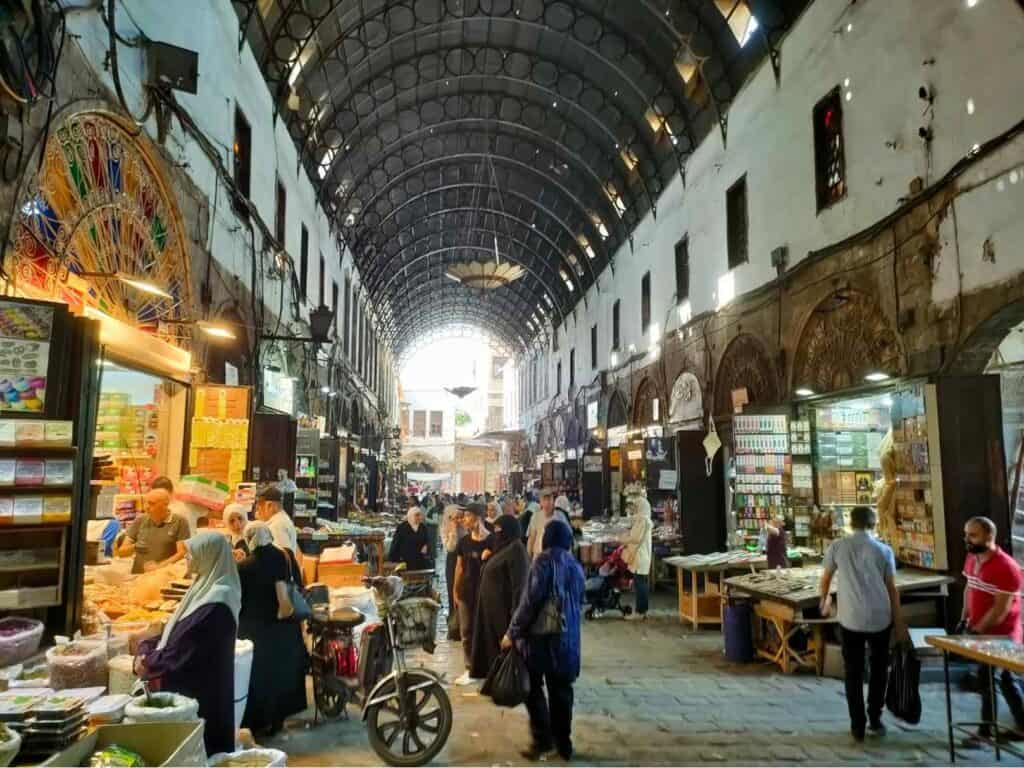
As for the other part of safety, you might be surprised, but walking alone as a woman in the old city of Damascus or other cities in the country is completely safe. The minor crime rate is still quite low, but of course, as elsewhere, you should take care of your belongings.
It would be irresponsible of me, though, to say Syria is safe because nothing happened to me during the week I was there. However, traveling with a local agency that keeps you updated about the current situation and does not take you to certain places (like the St. Simeon monastery, the Dead Cities, etc.) can give you a certain confidence that you will not encounter any issues.
Travel is everybody’s own responsibility, and anything can happen anywhere.
Travel insurance to Syria
SafetyWing is a recommended and affordable travel insurance. IATI is another reliable travel insurance that you can use regardless of your nationality in Syria. However, local travel agencies might include travel insurance in your tour package. This was the case with me when I traveled with Syrian Guides.
Is it ethical to visit Syria as a tourist in 2024?
This is another important point to discuss, and you will get many criticisms for considering a trip to Syria. There is a moral dilemma about whether it is ethical to travel to a country where millions were internally displaced, forced to leave the country, and don’t have the chance to return. This has changed during the last few years, as most of the country has been considered safe. Syrians can return to visit their families and spend their holidays at home without fear of repercussions. Of course, those involved in politics may not want to risk returning. The compulsory military service and the economic crisis are other factors that keep Syrians away.
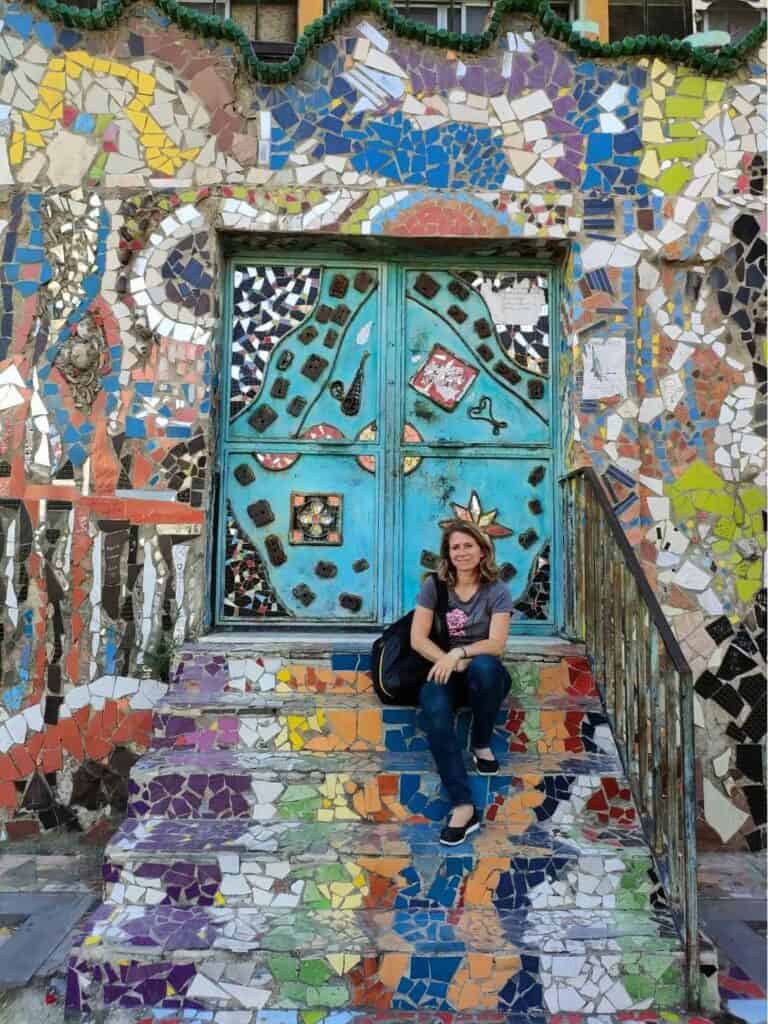
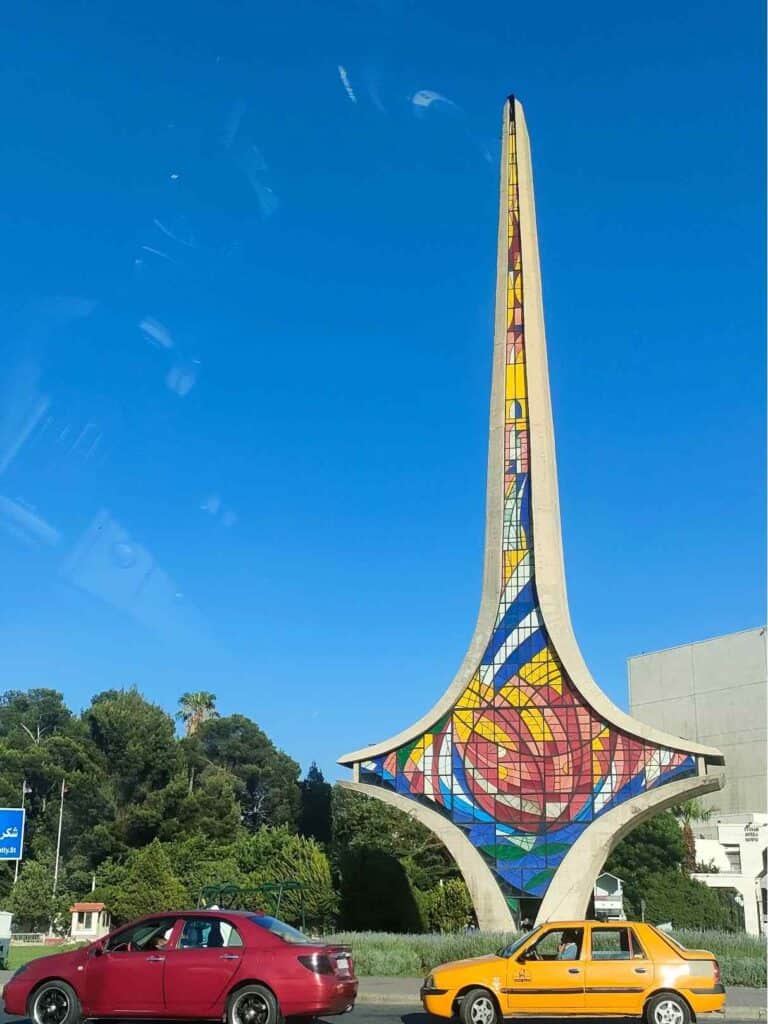
I was also facing this dilemma and hesitated about whether I should go. However, traveling is about learning by visiting ancient historic sites, meeting local people, and learning about their way of life and culture. After my trip to Iran, I realized that we should not judge a country based on the image depicted by the media; a country’s domestic and foreign policy is by no means a reflection of local people. My first-hand experience constantly challenged my previous opinion and confirmed that nothing is black and white.
But what is most important when discussing whether it is ethical to travel to a country is the reaction of local people! And in Syria, like in Iraq and Iran, I received an exceptionally warm welcome.
The moment I arrived in Syria, the soldiers at the checkpoint greeted me, saying, “Welcome to Syria.” It immediately made me feel at ease, having decided to travel to a country most people told me not to.
I met several people during my trip, and they were eager to talk about life in Syria.
However, being sensible and having a basic knowledge of recent events is important. If you are curious to understand and learn, aware of your privilege to get a visa and have the financials to afford such a trip, this is a trip for you.
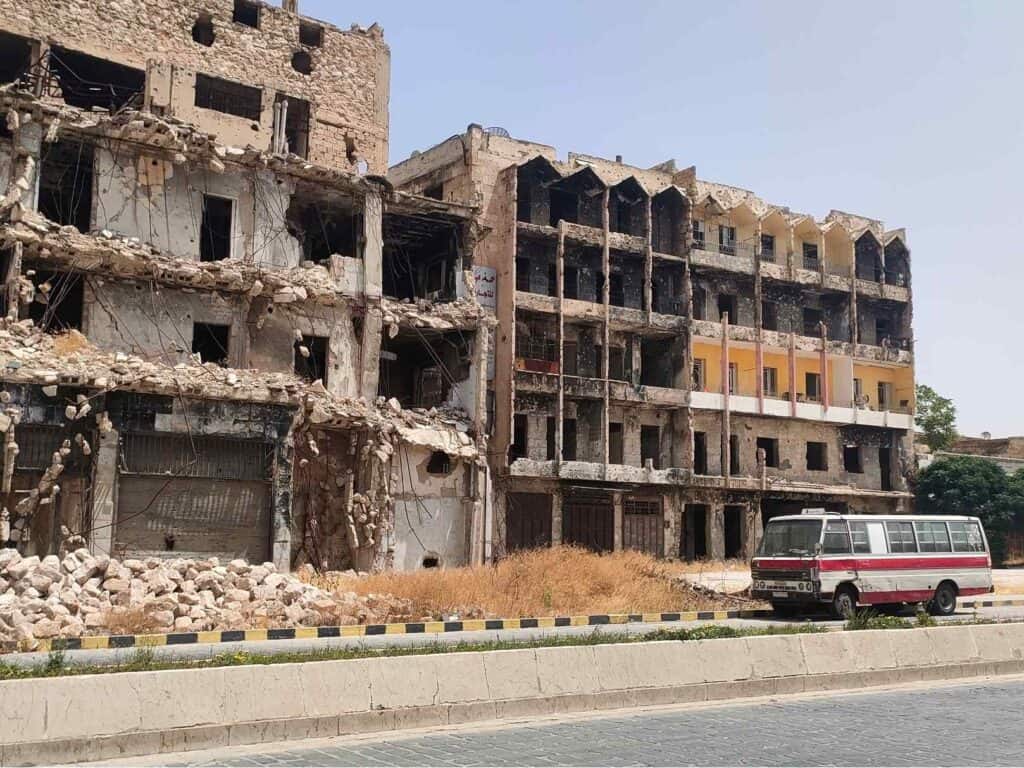
It is also important to behave as a responsible traveler. Even if you otherwise travel on the lowest budget possible, remember to support locals by buying some things. Finding something you like in one of the fantastic souks is not hard at all.
Other things to keep in mind:
– Do not start discussions about politics unless they talk about it.
– Don’t pose in front of ruined buildings devastated by the war
– Don’t disrespect the president in any way!
– Better not to say if you are atheist as it is not seen well that a person doesn’t have a religion
– Ask people for permission to take photographs. Especially in Muslim countries, conservative women are against it
Visit Syria independently or with a group
The rules about whether tourists can visit the country independently or only with a local agent are changing.
Solo travel with e-visa
As of May 2024, the e-visa system has been launched, enabling individual travelers to apply for their visas here.
As it is very new, there is not much experience with it. I heard about a case when an Italian tourist was rejected, which makes me assume that through a local tour company, your visa acceptance is more likely. Those applying for their visa independently are required to pay a service fee of 20 USD at the border.
Visit Syria with a group
In any case, even if the new system allows individual travelers in the country, I highly recommend joining a tour with a knowledgeable tour guide who can show you the hidden gems and give you a better understanding of the complexity of Syria by sharing his own experience. It will make a difference to the experience of your trip. Plus, at every checkpoint, my tour guide presented our day-by-day itinerary, which needs to be approved in advance, and even a slight last-minute modification can cause a problem. It happened in my case, and the company could sort it out, but I don’t know how independent travel would work smoothly with all these restrictions.
When I decided to go to Syria, organized travel was the only option, so I researched the travel agencies available. I found recommendations for Golden Team, Marrota Travel, and Syrian Guides. I traveled with Syrian Guides, and I was very satisfied with their services. I would highly recommend them if you plan a trip to Syria.
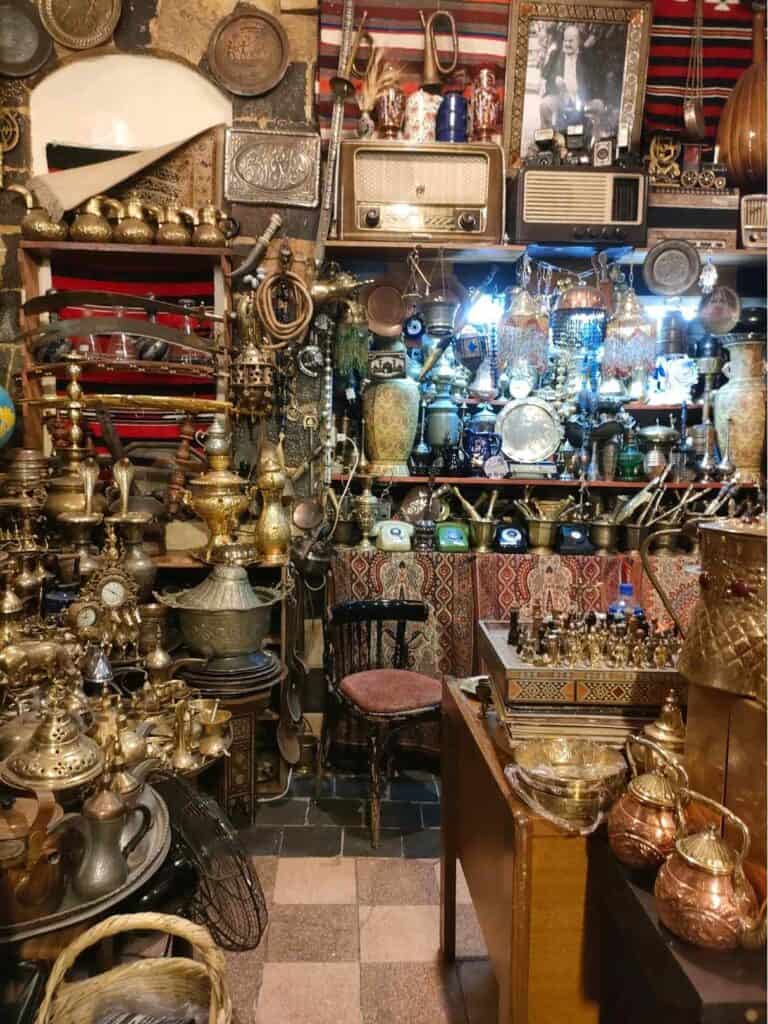
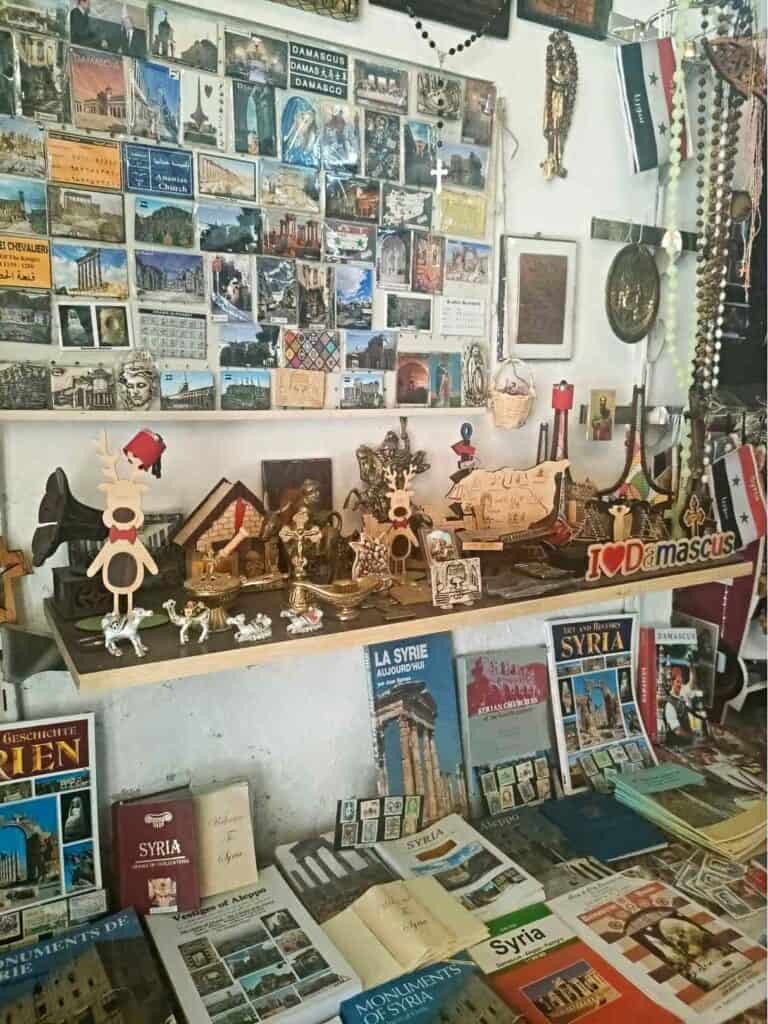
Syrian Guides was founded by three ambitious young people committed to providing their visitors with the best and most authentic experience. It wasn’t a standard group tour. The Syrian Guides team is committed to giving an authentic experience and showing all sides of their country. It was not just about seeing monuments and learning about ancient history and culture. They wanted to make sure you try the best local food, talk to people, listen to their stories, immerse in the local life, and get a better understanding of both old and recent history. So even if you usually like backpacking alone like me, I felt it was the best way to discover Syria as I wouldn’t have found all those hidden gems in Damascus or couldn’t have talked to people like this due to the language barrier.
You may wonder if they share a prescribed narrative with you. While all locals know what they can and cannot say, you can expect to get an honest opinion.
Get visa clearance
All nationalities except Jordanians and Lebanese need a visa to enter Syria.
If you travel with a local agency, they will arrange everything for you. You must provide some basic information and send a copy of your passport.
For most nationalities, it usually takes 7-14 working days; however, for US citizens and a few other nationalities, it can take up to 45 working days.
The visa to Syria costs 75 USD for citizens of the European Union but 200 USD for American or Turkish citizens. The tour company will let you know the exact amount.
Border-crossing from Lebanon/Jordan to Syria
Damascus Airport accepts limited flights, mainly from the Middle East, so the easiest way to travel to Syria is from Beirut (Lebanon) or Amman (Jordan).
The quickest option is to travel from Beirut (the border crossing is open 24 hours a day). The other advantage is that many nationalities can enter Lebanon visa-free while entering Jordan, there is usually a visa fee you must pay. A double-entry visa (80 USD) is available upon arrival at the Queen Alia International Airport in Amman. So if that fits your plan better, it is possible to enter from Jordan (the border crossing is open 8am-6pm). Also, keep in mind that there is an additional exit fee of 15 USD when you leave Jordan via land.
Please check the restrictions according to your nationality, which might differ from the abovementioned rules.
As you will most likely travel with a tour company in Syria, they will organize your transport from the airport or your hotel in Beirut to Damasus, and everything will be smooth, including getting the best rate for the money change. My driver had all the papers ready and told me where I should go and what to do, so everything went smoothly.
You stop first at the Lebanese border to get your exit stamp; then, you continue for 10 minutes with the car to the Syrian border, where you have to go from one window to the other. At the first one, you get a receipt, with which you go to the “bank” to pay the visa fee, which varies according to your nationality. You must pay this in USD and have the precise amount of yourself.
Read my detailed travel guide about visiting Jordan
All you need to know before visiting Jordan
Restriction to enter Syria
Officially, you cannot enter Syria if you have visited Israel, Aqaba in Jordan, or Sharm el-Sheikh in Egypt before (in practice, only if there is any sign of that in your travel document). You must confirm this by filling out the visa clearance application.
Restrictions with Syrian stamp in the passport
Having a Syrian stamp in your passport will result in certain restrictions. For example, you cannot enter Israel. The easiest solution is to apply for a new passport.
Money in Syria
Syria, like most countries in the region, is a cash country. There are no ATMs, so you should bring enough cash to cover your costs during your trip. The same applies in Lebanon.
Paying with dollars is illegal in Syria; however, you can change Euro or USD to Syrian pounds (SYP). Remember that it is very different in Lebanon, where you probably arrive, as they dollarized the payments, meaning you can equally pay with USD or LBP (Lebanese pound).
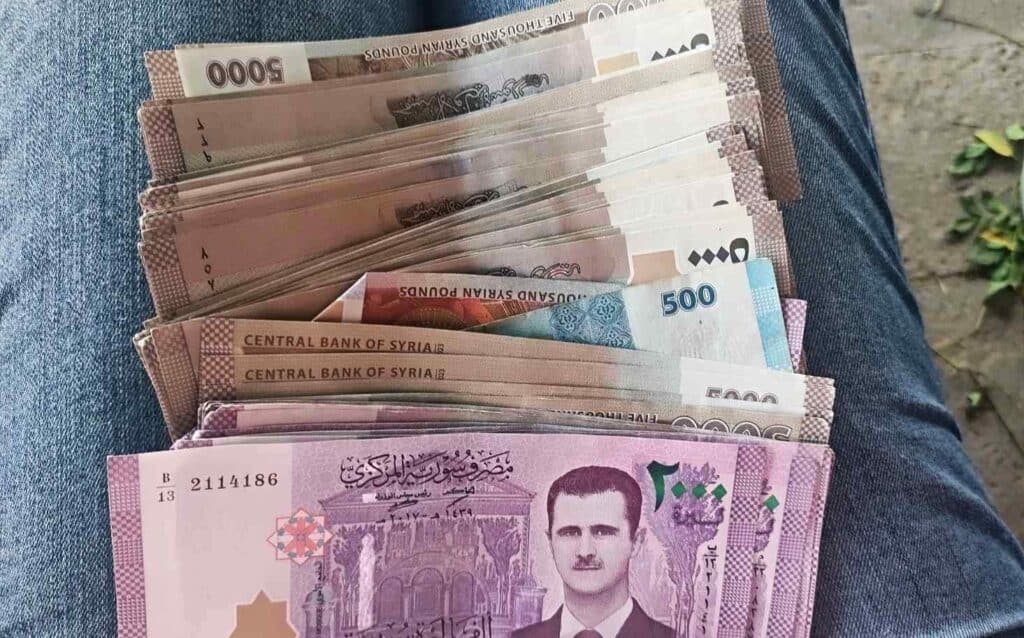
Based on the above, it is best to bring dollars. This is especially true as the visa fee to cross from Lebanon to Syria must be paid in USD.
If you have any Syrian pounds left, you can easily change it back when you return to Beirut.
The official rate is 1 USD to 13 600 SYP. You can exchange money in an exchange office in Syria; however, due to the government’s policy, you can get a better rate in Lebanon.
What is the best time to travel to Syria?
As for the weather, autumn and spring are the best times to visit Syria (March-May, September-November). During winter, temperatures can drop below zero, while in summer, especially in July and August, sometimes already in June, expect to have around 40 degrees.
Some festivals, like the Marmarita Carneval in the middle of August and the Holy Cross Day on 14th-15th September in Maaloula, can be a great time to travel to Syria and immerse yourself in local culture.
While in other Arab countries, Ramadan may not be the best time to travel, in Syria, it is much more relaxed, and you will have no problem finding something to eat during the day.
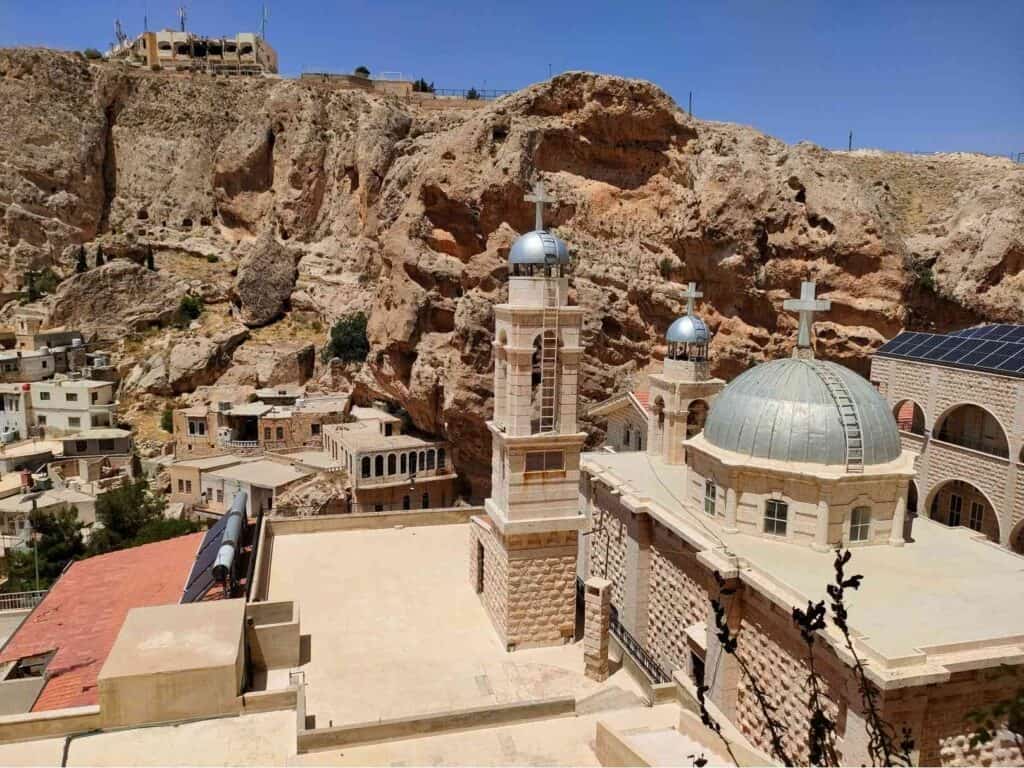
How to dress in Syria?
In Syria, women are dressed in many different ways. Only a few are wearing black chadors, while most women in the countryside are modestly dressed, covering their full bodies and hair. In Hama, you will notice that it is a more conservative city, and basically, all women cover their bodies and hair.
You are not expected to do the same as a tourist, as they know you have different rules in your country. However, always cover your shoulders and knees.
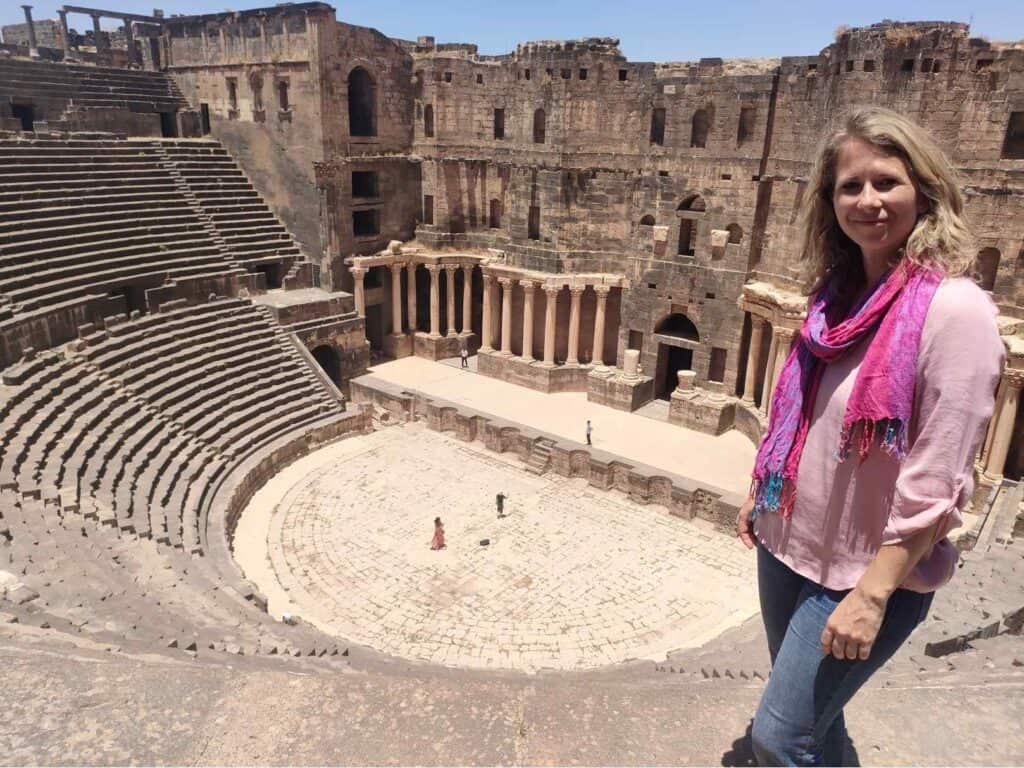
Plus, in Damascus, many women and girls dress like anybody in Western countries.
Women get an abaya at the entrance to enter a mosque regardless of how they are dressed.
Sim card
You can buy at the border (the easiest option) or in Damascus. It costs the equivalent of only 7 USD and is valid for three months. Syriatel is the local service provider.
Is Syria cheap? Prices in Syria
Syria is in a deep economic crisis, and most people would like to move abroad for better conditions, but this is becoming increasingly difficult. Prices are soaring for locals, but if you arrive from a Western country, you will find it quite cheap.
Example of prices:
– Shawarma/falafel: 1.2 USD/0.5 USD
– local bier (0.5 l): 1 USD
– Meal for 2 people in a mid-range restaurant: 20-30 USD
– A burger meal: 5 USD
– A bottle of water: 0.5 USD
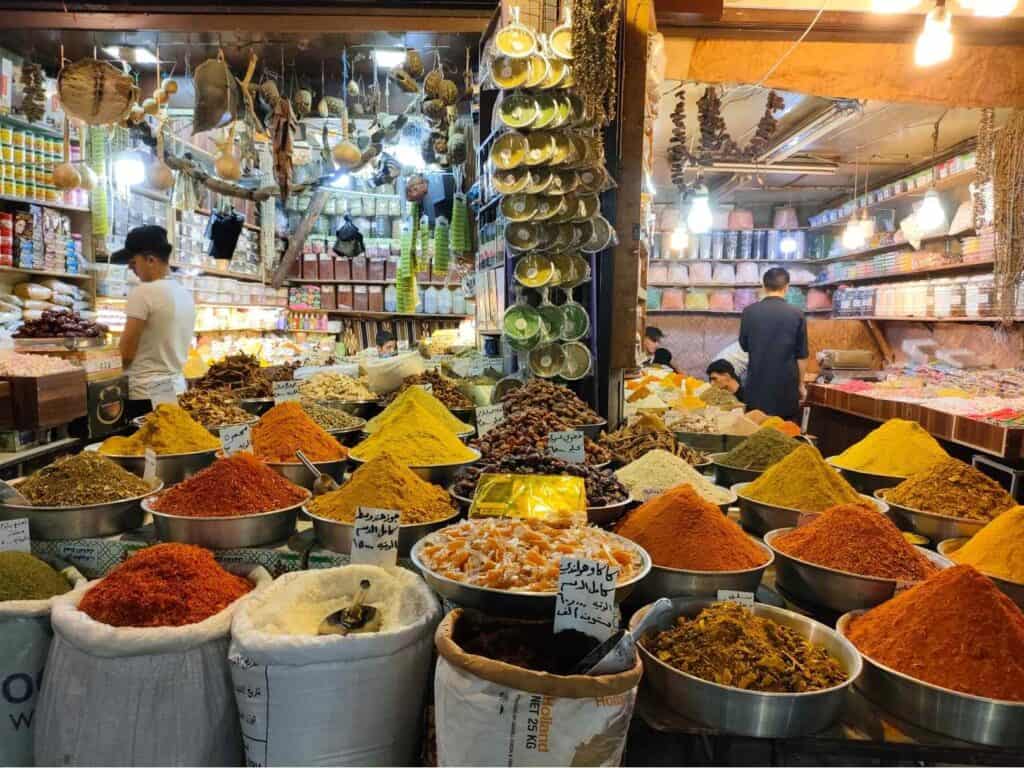
Accommodation
While the war destroyed several hotels in many cities, and due to a lack of financial resources, they were not renovated, staying in a traditional Damascene house is an experience itself in Damascus.
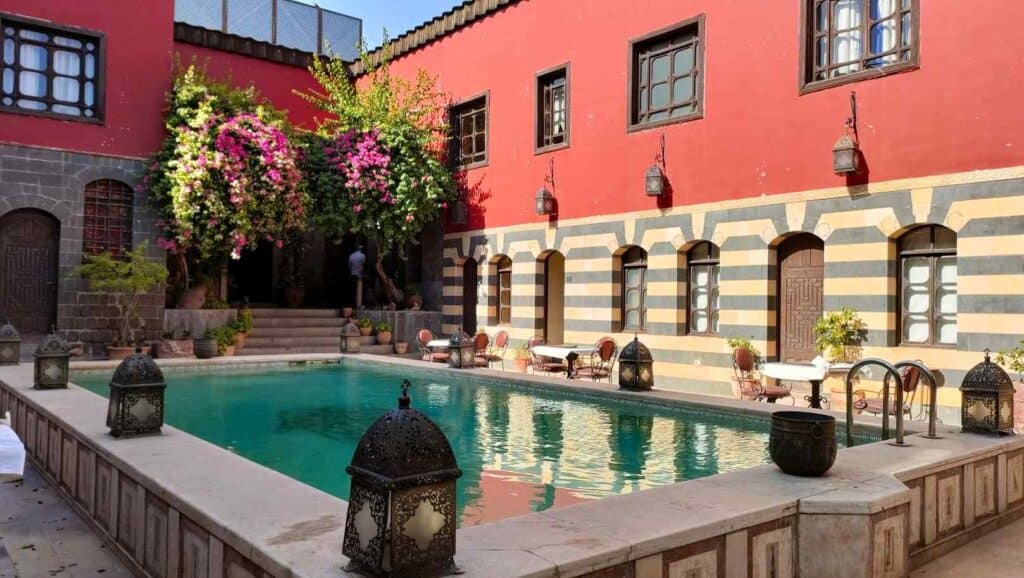
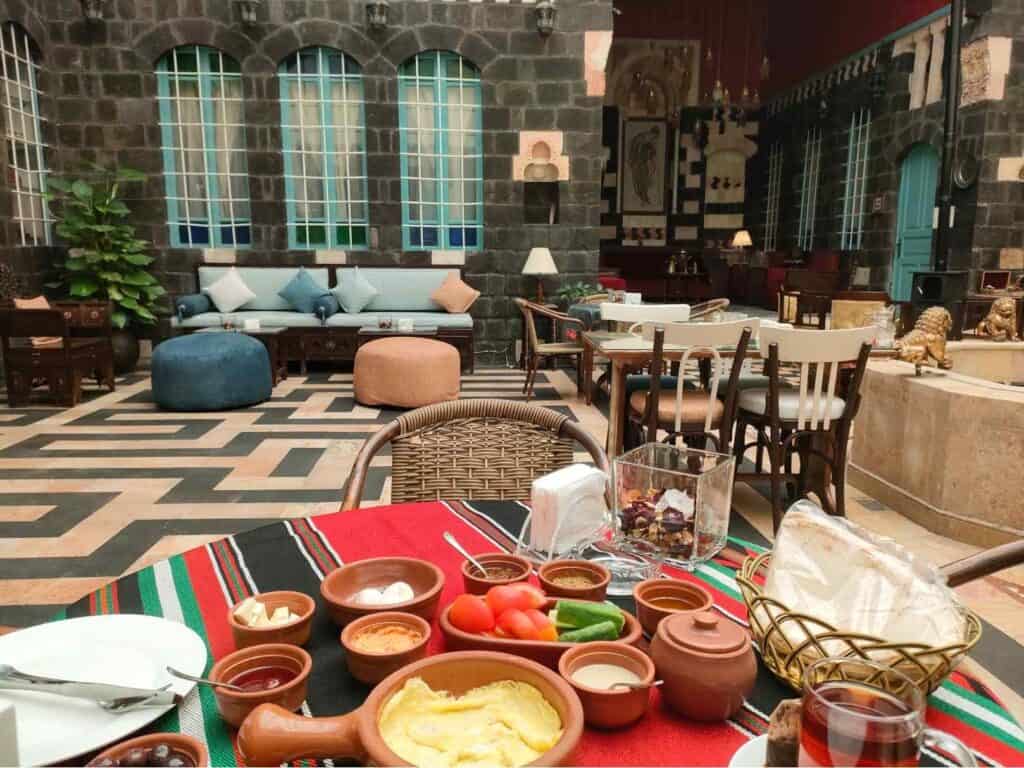
Food and alcohol in Syria
Syria probably has the best cuisine in the Middle East, competing with Lebanon. Actually, they say that most of the meals offered in Lebanese restaurants come from Syria. It is mainly due to the fresh ingredients they use that the Syrian kitchen is considered the best in the Middle East. Plus, in restaurants, you find mostly local food; it is not something you have to search for long.
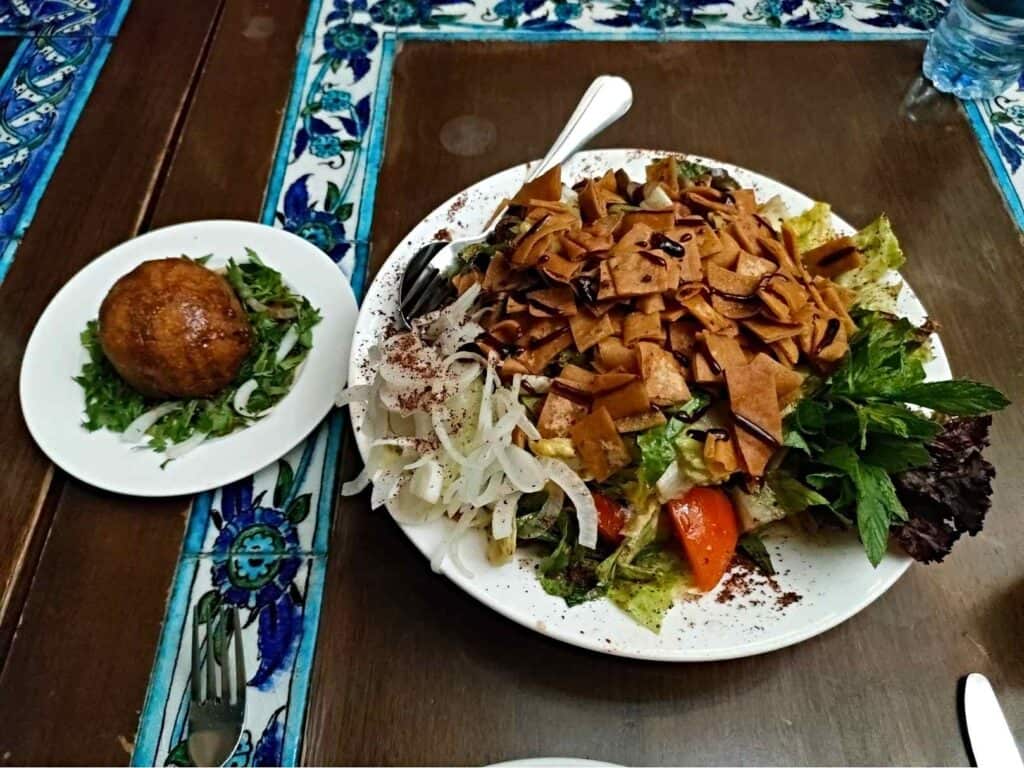
Meals start with a “mezze”, different kinds of cold and hot starters. Tabbouleh, the fresh salad with tomatoes, onions, mint, and sauce, Baba ghanouj, an aubergine dip and hummus are one of the most common. Kibbe is a standard hot starter (minced lamb with onion and pine nuts, often served in a ball shape).
Different types of chicken and lamb kebabs, like shish taouk, are the most popular main meals. Cherry kebab is the specialty of Aleppo: small pieces of lamb served on thin triangles of bread and topped with cherry sauce mixed with pistachio and cinnamon.
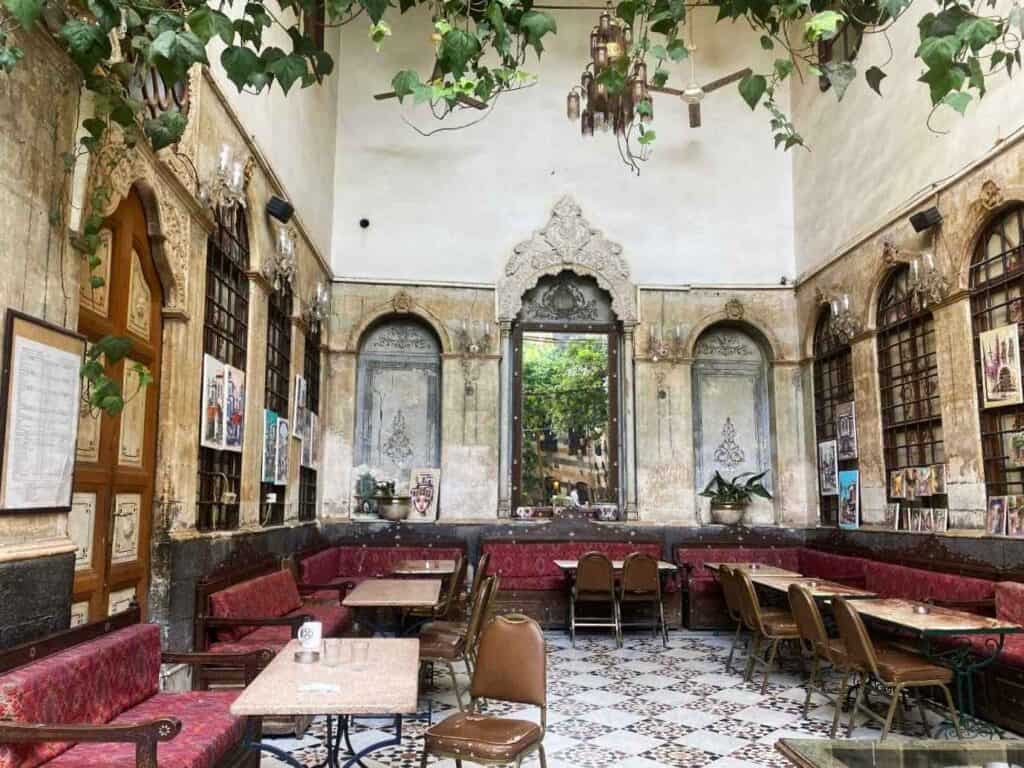
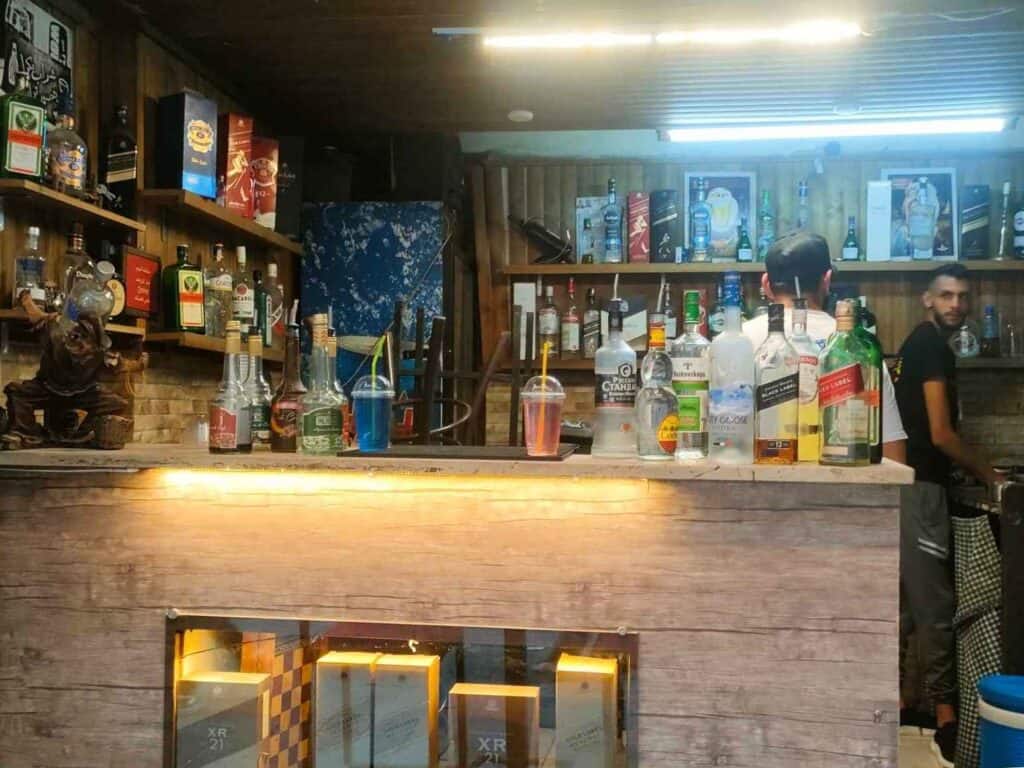
Most main meals are chicken and lamb-based; beef is rare in Syria. Meat usually means lamb, and chicken is mentioned separately.
However, Syria’s street food (falafel and shawarma) is really delicious. As they use fresh ingredients, it is safe to eat. Don’t forget to try the lamb shawarma served with pomegranate sauce. You will probably end up eating it every day.
You can taste all these delicious foods in a unique environment in traditional Damascene houses.
You may be surprised that you can drink alcohol in Syria. Along Straight Street in the Christian quarter of Damascus, there are several restaurants and bars where they sell alcohol. However, public drunkenness is illegal!
The most famous local liquor is the aniseed Araq, the same as in Jordan, and the most popular local beer is Apamea.
Ethnic groups
Most of the population are Arabs (85-90%), while the rest are mainly Kurds and Armenians. Most Kurds live in northeast Syria, while the Armenian community is in Aleppo. There are also some Assyrians, who are Aramaic-speaking people indigenous to the Middle East, and Turkmen, who are initially from Central Asia.
There is a significant number of Palestinian refugees who arrived after 1948 and 1967 and enjoy the same right to education and health care as Syrian citizens, but they’re not citizens.
Geography
Historically, the area known as “Syria” once encompassed modern-day Lebanon, Palestine, Jordan, and southern Turkey. However, the Sykes-Picot agreement reshaped the entire Middle East after the First World War, reducing the country to 185 180 km2.
Syria borders Lebanon, Turkey, Iraq, Jordan, Israeli-occupied Golan Heights, and the Mediterranean Sea.
Thanks to its strategic location between the Mediterranean ports and Asian trade routes, Syria has always been an important commercial center. However, contrary to what most people believe, Syria is far from a pure desert country. Only about one-fifth of Syria is characterized by desert. Another portion is semiarid; other regions, particularly along the Mediterranean coast and the Golan Heights, are incredibly verdant. There is even a cedar forest in Syria, not only in neighboring Lebanon.
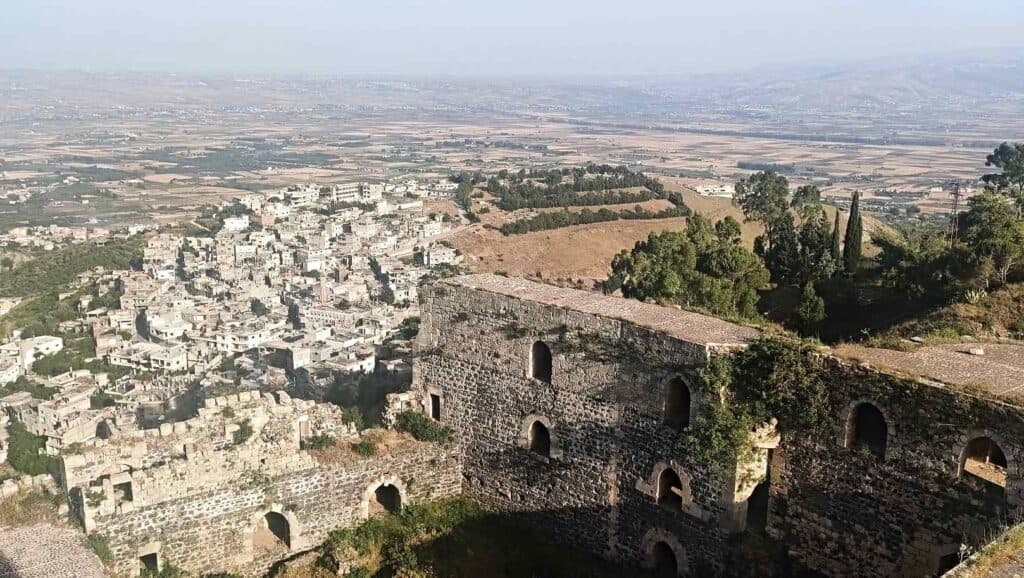
The two main rivers are the Orontes and the Euphrates. The latter provides some 80 percent of the country’s water resources. In 1973, the Syrian government completed the al-Thawra dam on the river, creating a large reservoir known as Lake Asad.
Official language
Arabic is the official language in Syria, while Kurdish, Armenian, and other languages are spoken among minority ethnic groups. People in a few Christian villages north of Damascus use Aramaic, the language of Jesus (or at least a dialect of that).
Religion
Officially, Syria is the only secular country in the Middle East, and it is proud to say that religion is irrelevant. However, in social relations, it does matter. Depending on the family, they might refuse the marriage of their sons or daughters to somebody of a different religion. One of Syria’s main characteristics is the presence of multiple faiths and cultures.
Approximately 74% of the population are Sunni Muslims; 16% belong to Muslim minorities (including Alawites and Druze) and 10% are Arab Christians.
Syria is more socially conservative than its neighbors Lebanon and Turkey but more liberal than many other Arab nations. Women work in almost every field and drive cars and smoke shisha as freely as men do.
Alawites and Druze are two less-known religions that are present in Syria and a few other countries.
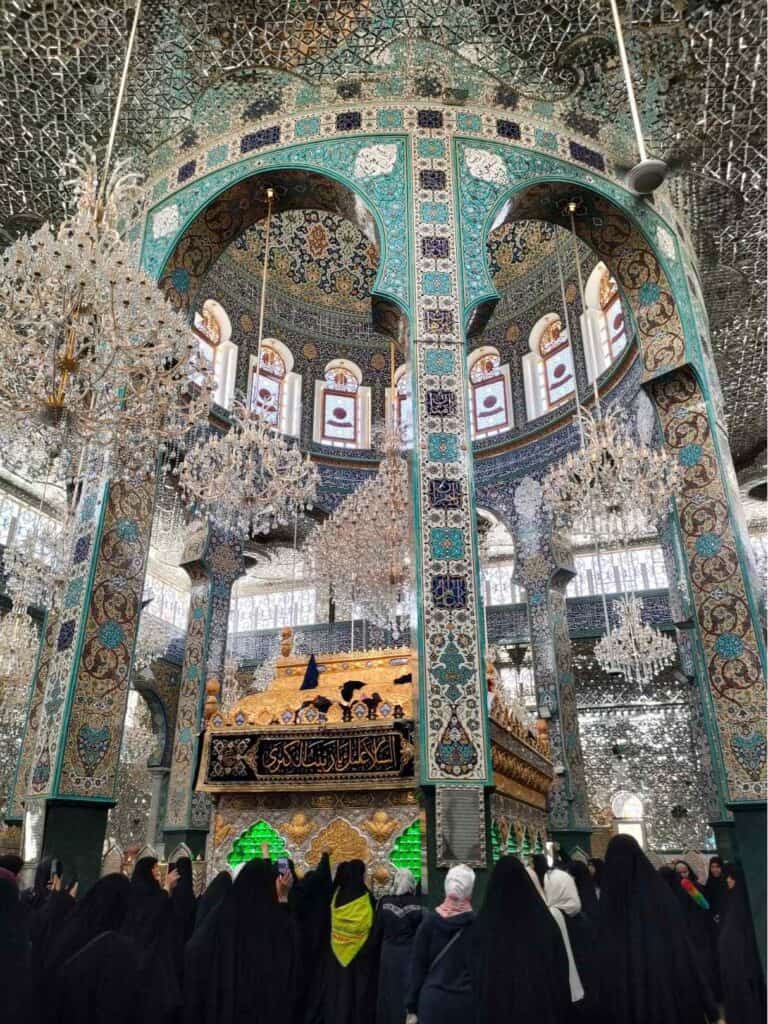
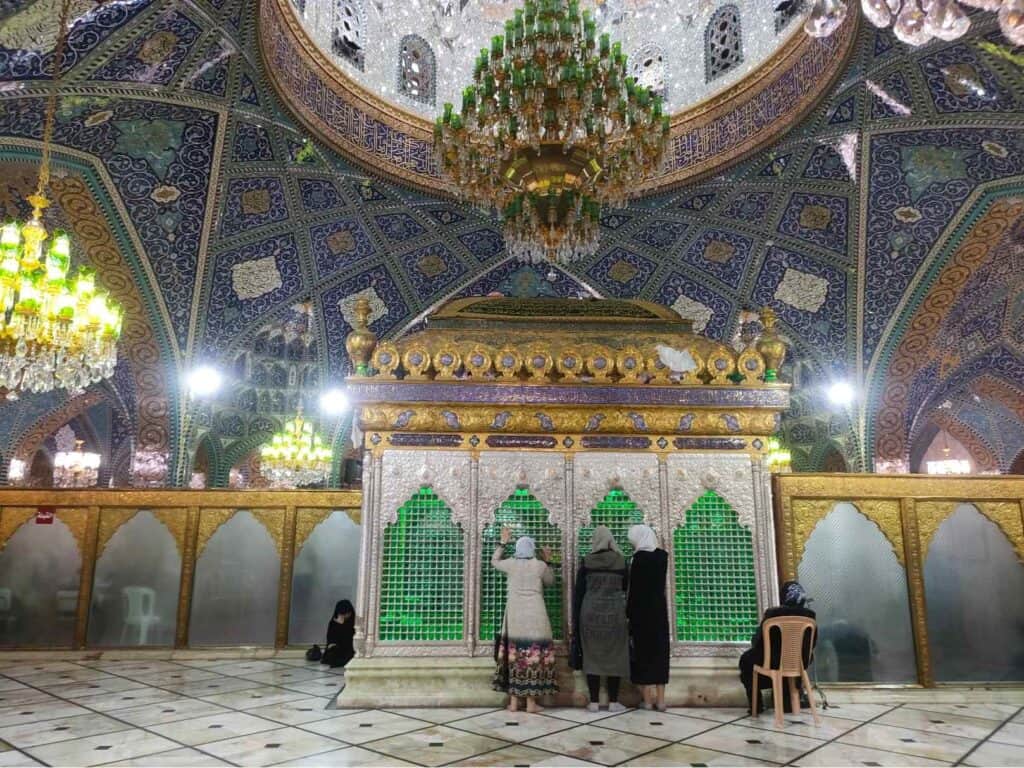
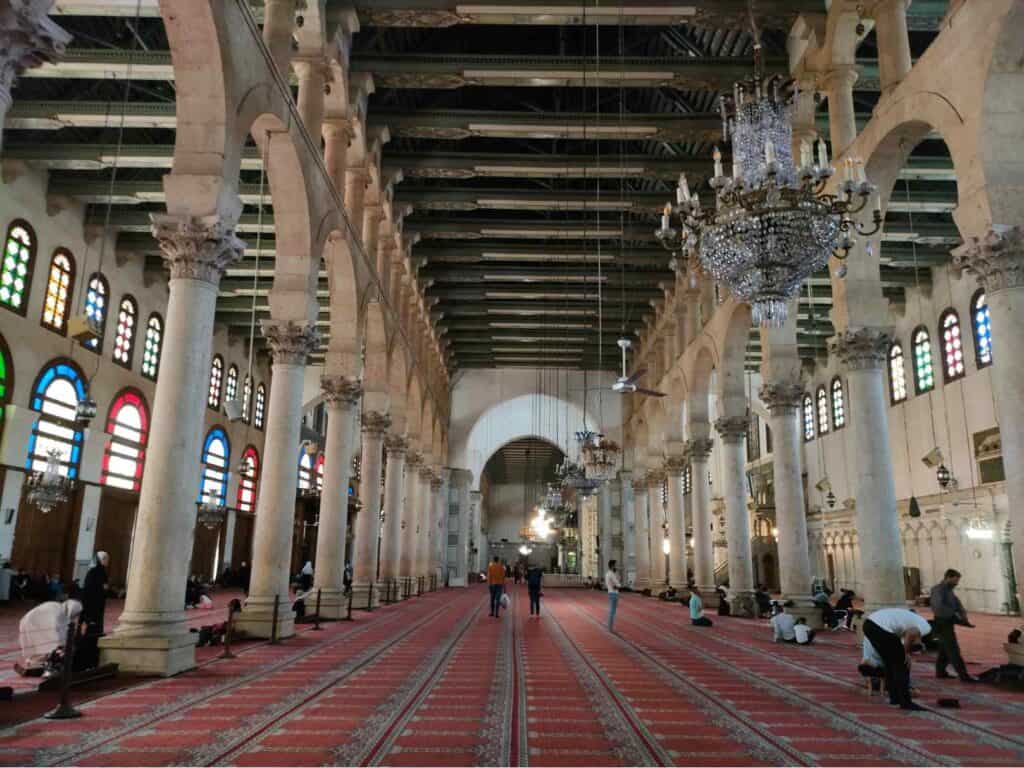
Alawites
The Alawites are mostly considered an offshoot of Shia Islam, once considered heretical but now more widely accepted. They have historically lived in poverty and isolation in Syria’s coastal mountains. Before the French mandate, they were called Nusayris after the name of the mountains, where they settled and preserved their pre-Islamic religion even when Christianity flourished in the region.
The Alawite religion is highly secretive and only initiates know its details. They follow the Quran and other sacred texts, believe in reincarnation, consider Ali a divinity, and respect the twelve imams who followed Muhammad. They believe all people were first stars and fell due to disobedience. The Alawites also celebrate Christian festivals like Christmas, Easter, and Epiphany and unlike Muslims, who go to pray in the mosques, they don’t use any building for worship.
Alawites form about 13 percent of Syria’s population. They are concentrated in Latakia, where they make up the majority of the population.
They were considered infidels and persecuted during the Ottoman period, but the French gave them a semi-autonomous area, similar to the Maronites in Lebanon, to practice their religion freely around Latakia. Since the Assad family also belongs to the Alawis, they enjoy even more privileges, which is a source of tension with other religious minorities.
Druze
The Druze form about 3 percent of Syria’s population and live mainly in the Golan Heights, Idleb, and the southern Jabal al-Arab, where they migrated from Mount Lebanon in the 18th and 19th centuries. The number of Druze in the world amounts to around 1.1 million, most of them living in Lebanon and Syria. Some villages are entirely inhabited by Druze people. They usually made fortunes in South American countries, like Venezuela, and built nice houses when they moved home. Women and men who are initiated wear a distinct dress and cover their heads with a white turban or scarf.
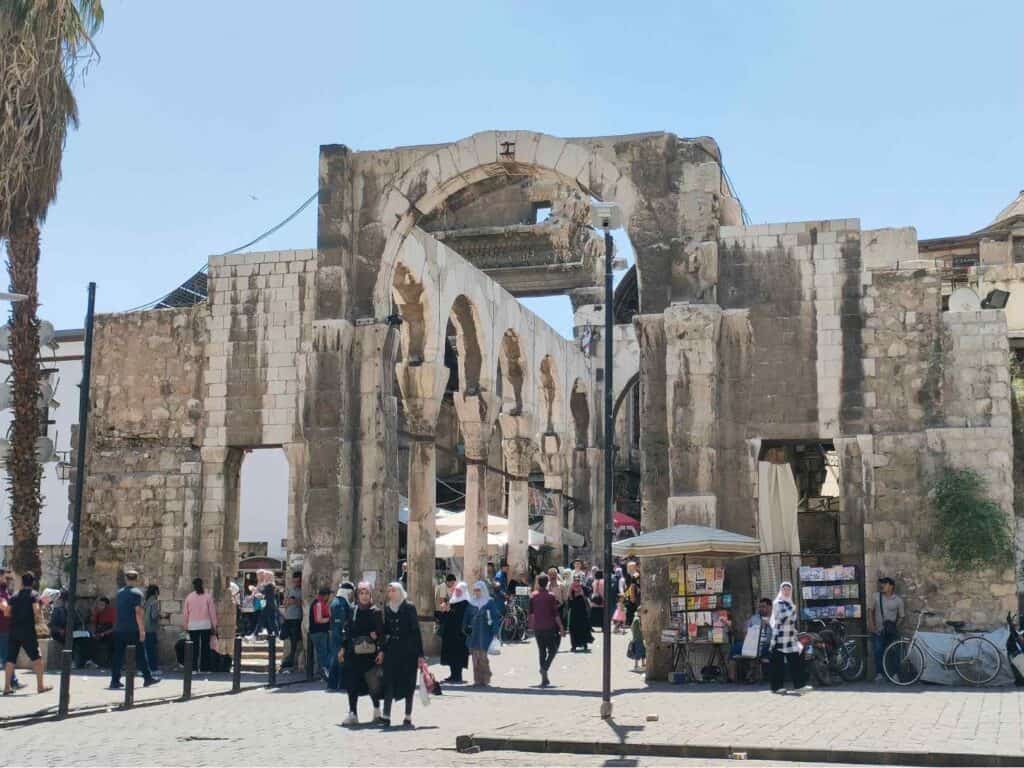
Like the Alawis, the Druze are a highly secretive religion, and not much is known to outsiders. The religion is very complex and contains Sufi mysticism and Iranian religious traditions. Like the Alawis, the Druze also believe in reincarnation.
No one can convert in or out of the religion, and intermarriage with other sects or religions is prohibited, although it occurs in practice. Thursday is their holy day, and they reject the five pillars of Islam, which also means they don’t fast during Ramadan and don’t complete the pilgrimage to Mecca. However, they revere Mohammad, Jesus, and Moses as the most respected prophets and accept the Quran, the Torah, and the Bible as sacred texts.
That their community produced the initial spark and leadership for the 1925 revolution against French rule in Syria is a source of continuing pride for today’s Syrian Druze.
Christians
Some might be surprised that not all Arabs are Muslims, and one of the oldest Christian communities lived in Syria. While a majority of Christians adhere to the Greek Orthodox (also called Melkite) Church, there are also Syrian Christians who are Nestorians, Chaldean Catholics, Assyrian Orthodox, Assyrian Catholics, Armenian Orthodox, Armenian Catholics, Maronites, Greek Catholics, Syriac Orthodox, Syriac Catholics, Protestants, and Roman Catholics.
Since Catholics in Syria calculate the dates of their holidays according to the Gregorian calendar, while Orthodox communities use the Julian calendar, the celebration of the two communities can fall weeks apart.
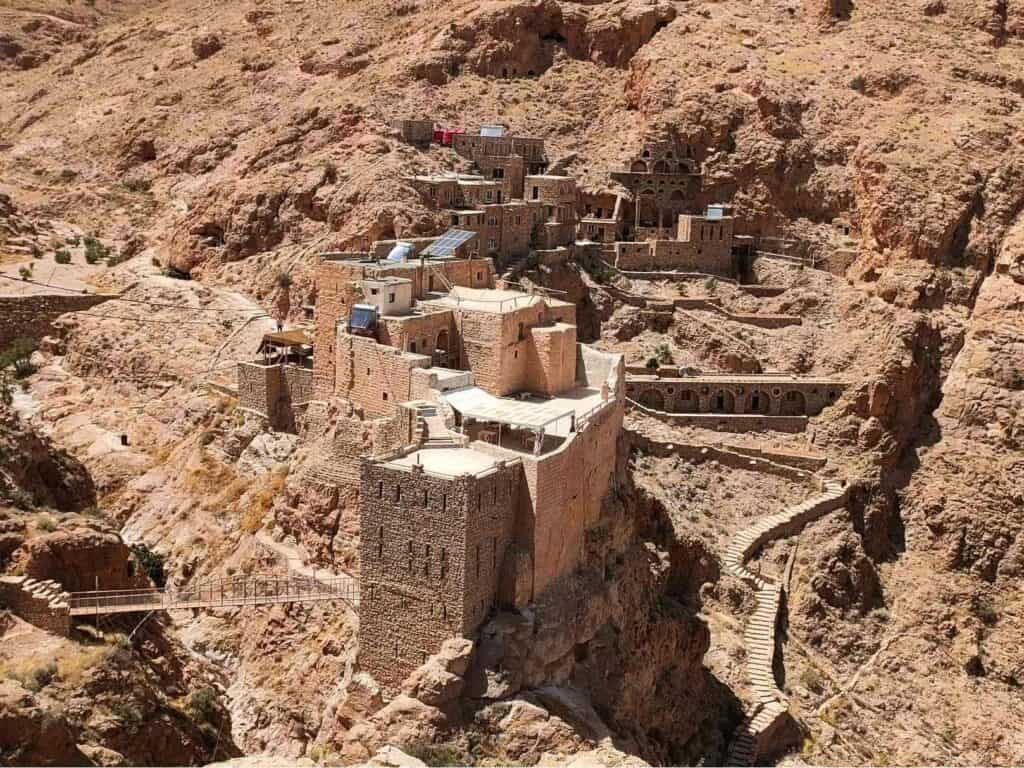
Jews
Many Jews found refuge in Syria after their expulsion from Spain in 1492. Many left during the first half of the 19th century for better economic prospects in the USA and Europe, and in even bigger numbers after the establishment of Israel in 1948 and the 1990s. Today, only a handful of Jewish families live in Syria.
Short history
Syria has a very rich history. It was part of ancient Mesopotamia, the birthplace of the earliest civilizations.
The oldest settlements in Syria are Ugarit, Mari, and Ebla. Ugarit flourished in 6000 BC, where the world’s first alphabet was found. Mari was inhabited from 5000 BC by the Sumerians and Amorites, while Ebla, dating to around 3000 BC, was part of a Semitic Empire and was later overrun by the Akkadians.
Artifacts from these sites are on display in the Aleppo Museum. After Canaanites, Phoenicians, Aramaeans, Ancient Egyptians, Mitannians, Assyrians, Babylonians, Hittites, and Persians, Alexander the Great conquered Syria, which was followed by the Seleucid dynasty founded by one of his generals.
In 64 BC, Rome annexed Syria, making it one of its provinces. Queen Zenobia, one of the most famous figures in Syrian history, also turned up during this time. The wife of the Roman protectorate, Palmyra’s ruler, even invaded Egypt and posed a serious threat to the Byzantine Empire.
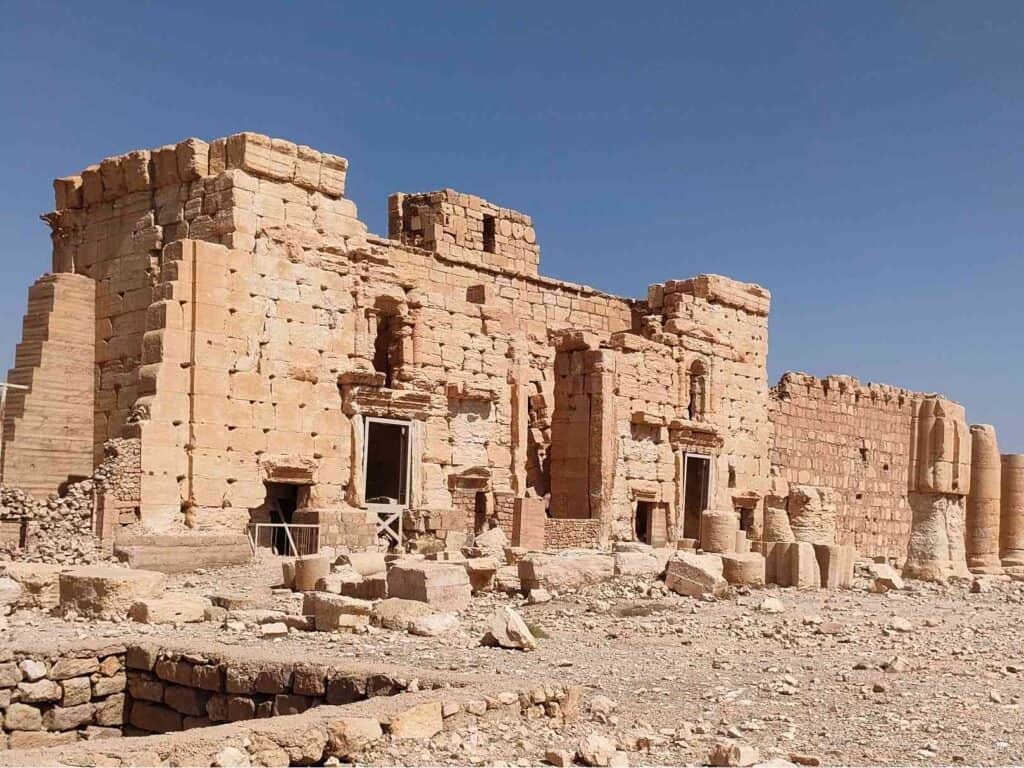
The weakening of the Byzantine Empire led to foreign incursions and, ultimately, to the Arab invasion in 640. The first Arab Umayyad dynasty moved its capital from Mecca to Damascus. Syria became its wealthiest province but continuously expanded its territories as far as North Africa, the Iberia Peninsula, and even India in the east.
The subsequent Abbasid dynasty relocated its capital from Damascus to Baghdad.
The Crusaders established principalities in the 11th century in today’s Turkey, Lebanon, and Syria. Saladin, one of the most memorable figures in Syrian history with Kurdish origins, recaptured Jerusalem in 1187 and expelled the Europeans from most of their holdings. He then unified Syria and Egypt under the Ayyubid dynasty he founded.
Syria also faced the violence of Mongol invaders, who slaughtered tens of thousands of people when they sacked Aleppo. The Mongols were defeated in 1260 by the Mamluks, a military elite, and governed Syria for the next two and a half centuries. The Mamluks were unique in that they drew their rulers only from slave-soldiers of Turkish and Circassian origin.
The Ottomans took power from the Mamluks in 1516 and appointed designates to rule the “vilayets,” the administrative districts they divided Syria into.
When the Ottoman Empire entered the First World War on Germany’s side, the British responded by backing the Arab Revolt against Ottoman rule that began in the Arabian Peninsula and reached Damascus in 1918. It was led by Prince Faisal, son of Sharif Hussein of Mecca, who allied with the British. Faisal gained control of most of Syria and was proclaimed king of the Syrian Arab Kingdom. However, the secret Sykes-Picot Agreement between the British and the French in 1916 redrew the borders of the new countries created in the former Ottoman territories on the Arab peninsula.
According to the agreement, Syria and Lebanon became French mandates, while Iraq, Jordan, and Palestine were promised to the British. Soon after King Faisal’s coronation, France obtained a League of Nations mandate over Greater Syria. After its short-lived independence, Syria was once again ruled by a foreign power after 1920.
The French rule lasted until 1946 when it recognized Syria’s sovereignty and withdrew its last troops.
In 1958, in the wake of the increasingly popular pan-Arab nationalism led by the charismatic Egyptian President Gamal Abdul Nasser, Syria and Egypt were merged into the United Arab Republic. The two stars in the Syrian flag refer to that. However, the union only lasted until 1961.
In 1963, the Baath Party came to power via a coup. The Ba’ath Party in Syria shares historical roots with but is separate from Saddam Hussein’s rival Ba’ath Party, which was once in power in Iraq.
In the six-day war, Syria and its Arab allies (Jordan and Egypt) were easily defeated by Israel in 1967. As a result, Israel occupied the Sinai in Egypt, the Gaza Strip and the West Bank in historical Palestine, and the Golan Heights in Syria.
The Assad family has been in power since 1970, when the former minister of defense, Hafez al-Assad, first seized the power.
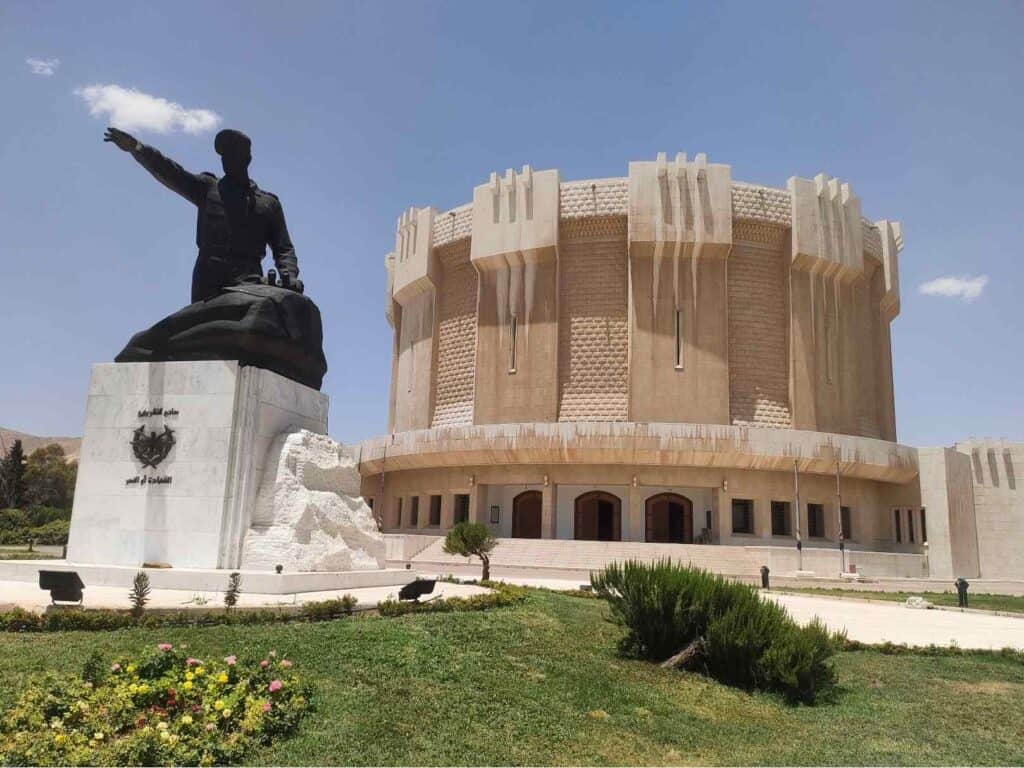
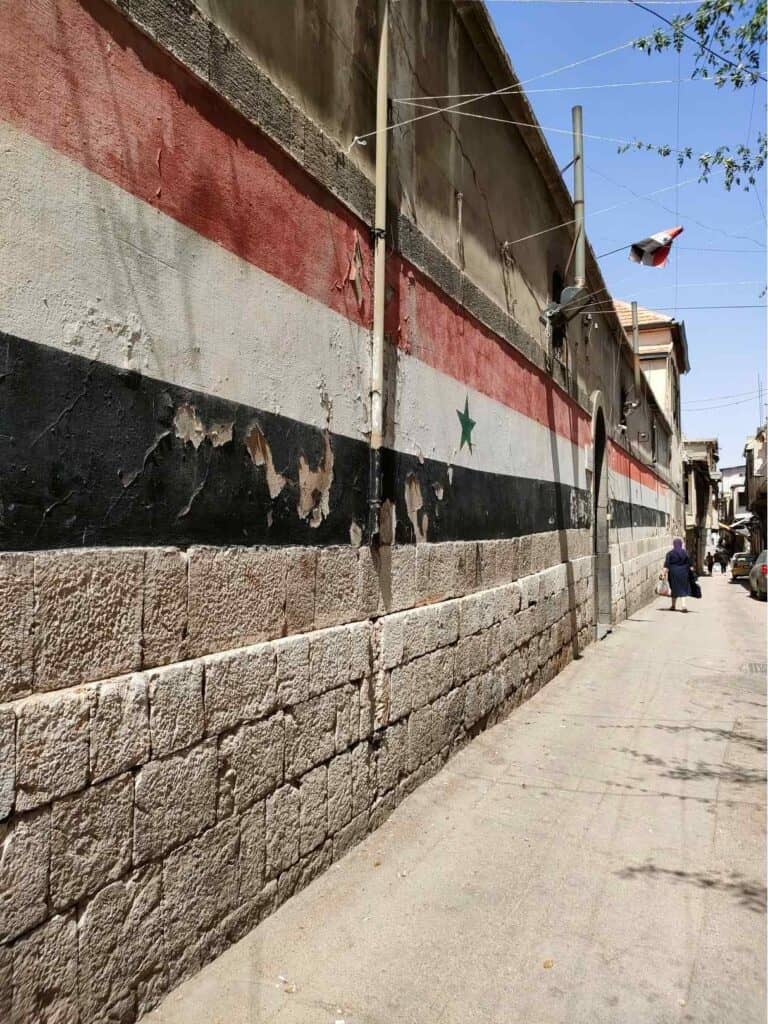

In 1973, Syria and Egypt launched a joint surprise attack against Israel to recover their lost territories. The war was considered a victory and partially restored a sense of national pride to Syrians. The Panorama Museum in Damascus is dedicated to this memorable event in modern Syrian history.
Hafez al-Assad was succeeded by his son Bashar, a British-trained ophthalmologist and technology enthusiast who has been in power since 2000.
It is common to see photos of the president in shops and offices around Damascus and the whole country. This is not mandatory and often does not necessarily signal devotion.
What to visit in Syria in 2024
You can do a day tour from Beirut to Damascus; however, you can spend several days in the capital itself. As mentioned above, not all parts of Syria are deemed safe in 2024. However, even what is accessible gives you a chance to spend one or even two weeks on an organized tour. Out of the 6 UNESCO World Heritage Sites, five are still accessible!
Apart from Damascus, you can visit ancient Christian monasteries, Crusader castles, the bigger cities of Homs, Hama, and Aleppo, and, of course, the famous ruins of Palmyra. If you are interested in history, you can go to Apamea, renowned for its two km-long colonnades dating to Roman times, Ugarit, where the first alphabet in the world was found, and Amrit, an ancient Phoenician city with probably the oldest stadium used for sports, competition even before the Greek. Bosra, the best-preserved Roman theatre, is also amazing.
In Latakia and Tartus, the two coastal cities, you can experience the vibe of the Mediterranean.
As for the landscape, Syria has everything from desert to barren mountains or others covered with lush green forests. Even the long, barren surface becomes vibrant due to the long stretch of bougainvillea along the road.
Read my detailed post about the best things to visit in Syria.
Other useful Middle East travel guides
5-7 and 10 day travel itinerary to Jordan
The best places to visit in Lebanon in 10 days
Not a long time ago, Syria attracted a large number of tourists and had everything needed to be a popular tourist destination. Still, it has always preserved its authenticity and was well-known for its outstanding hospitality. However, the war starting in 2011 made us forget Syria as a tourist site. It is, however, possible to visit it again, and even if it is not the same as before, Syria has so much to offer, and it can be a highly insightful trip for you. This travel guide helps you decide whether you should travel to Syria and what you should know before.

